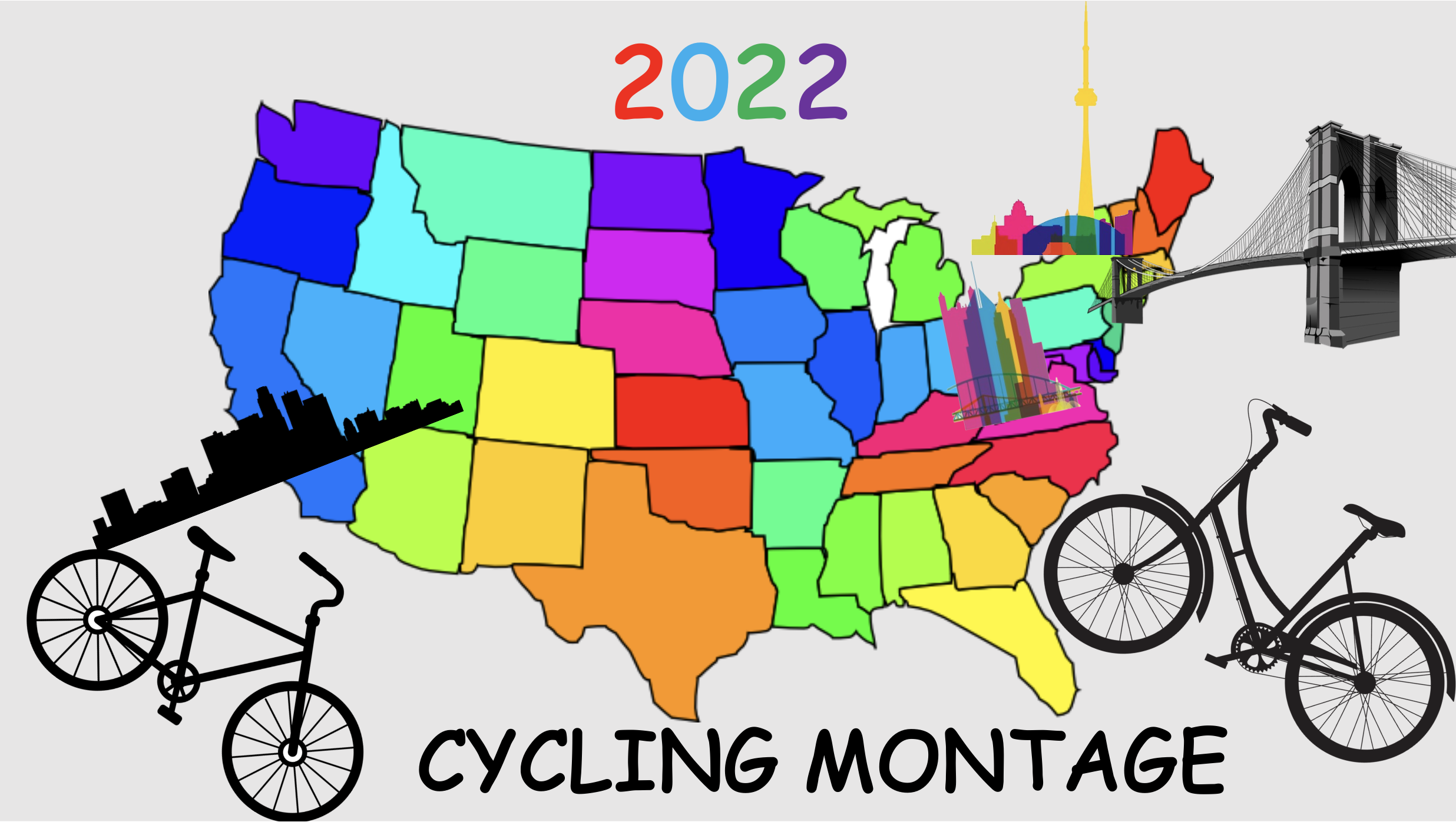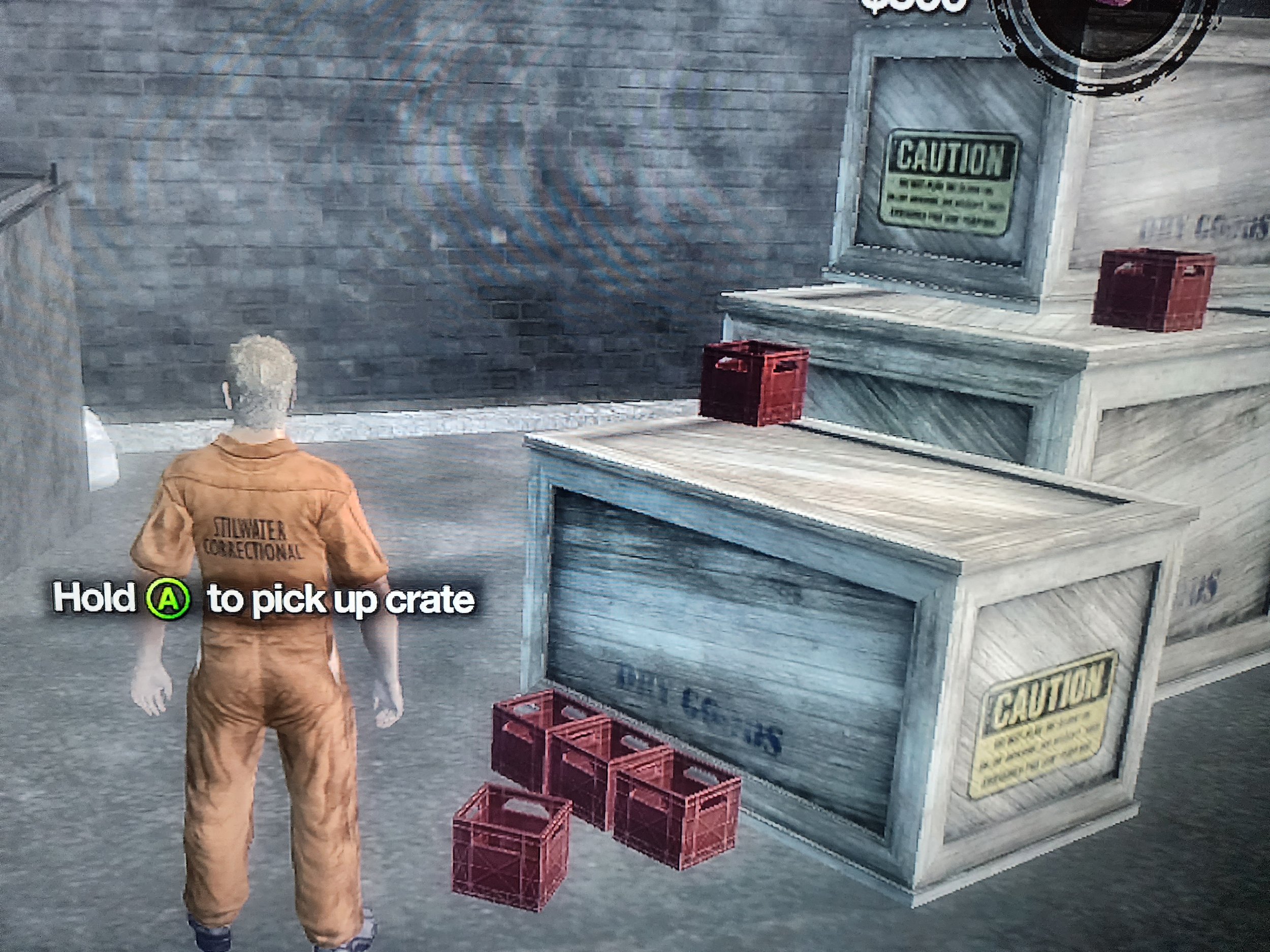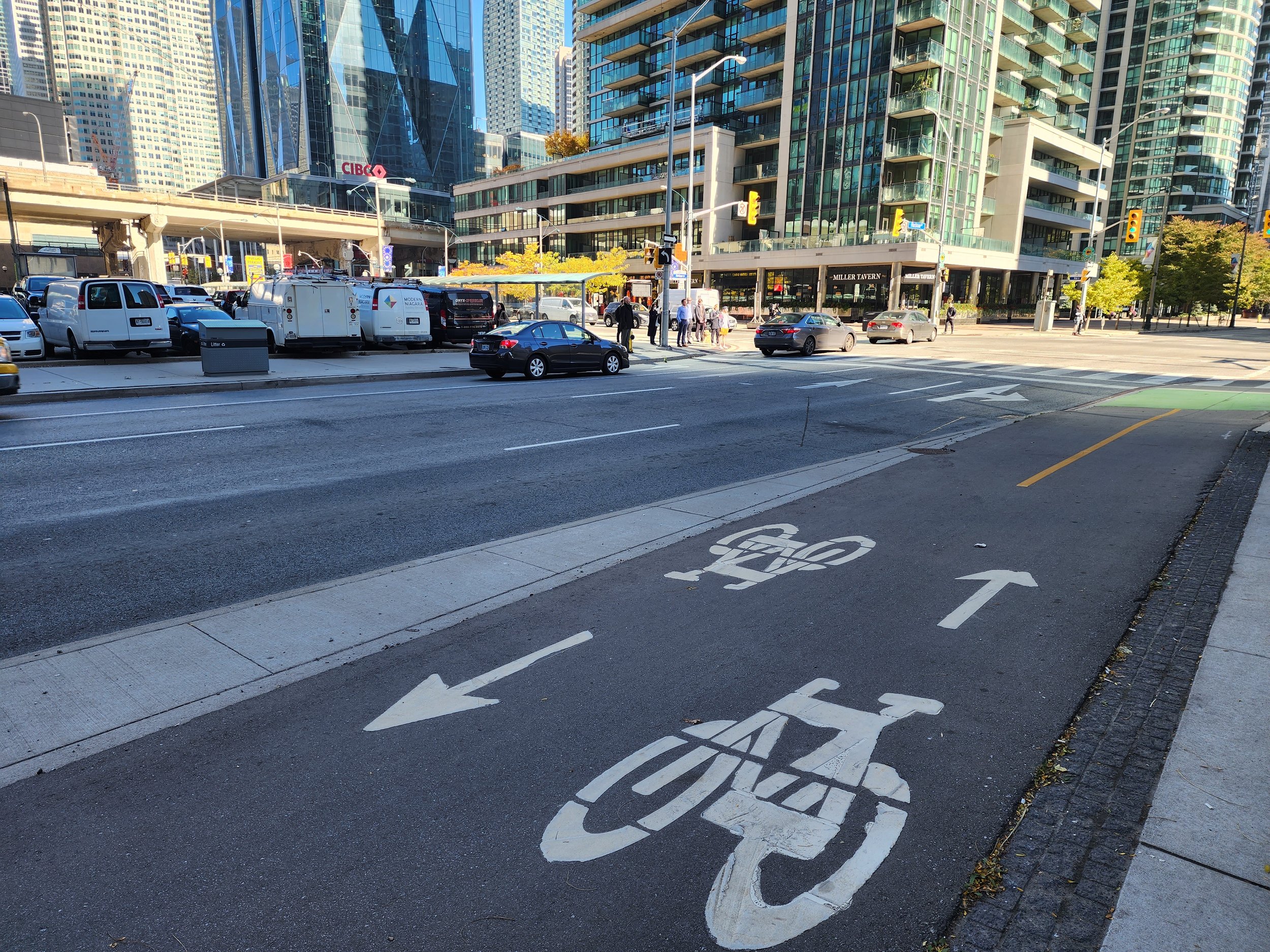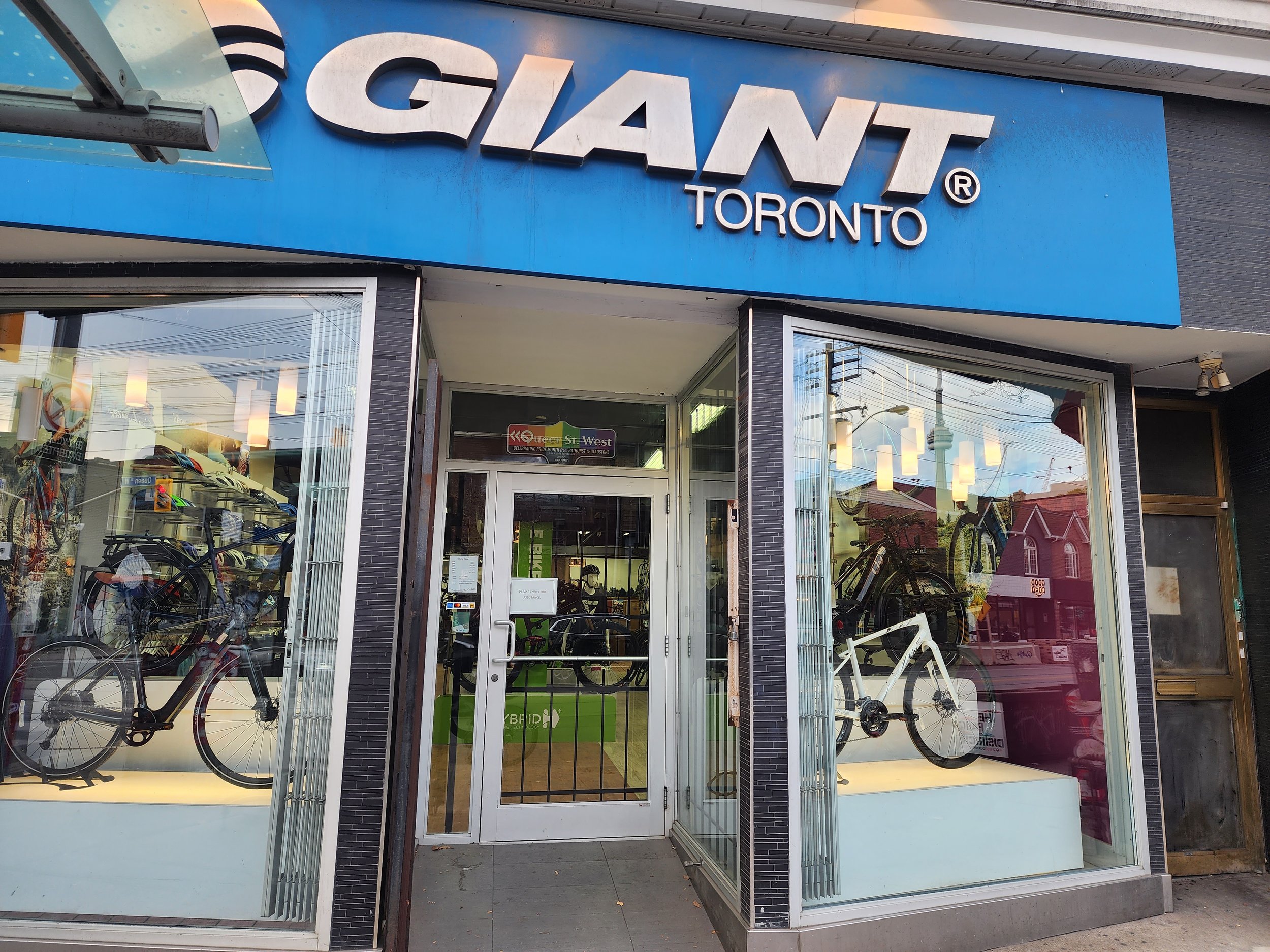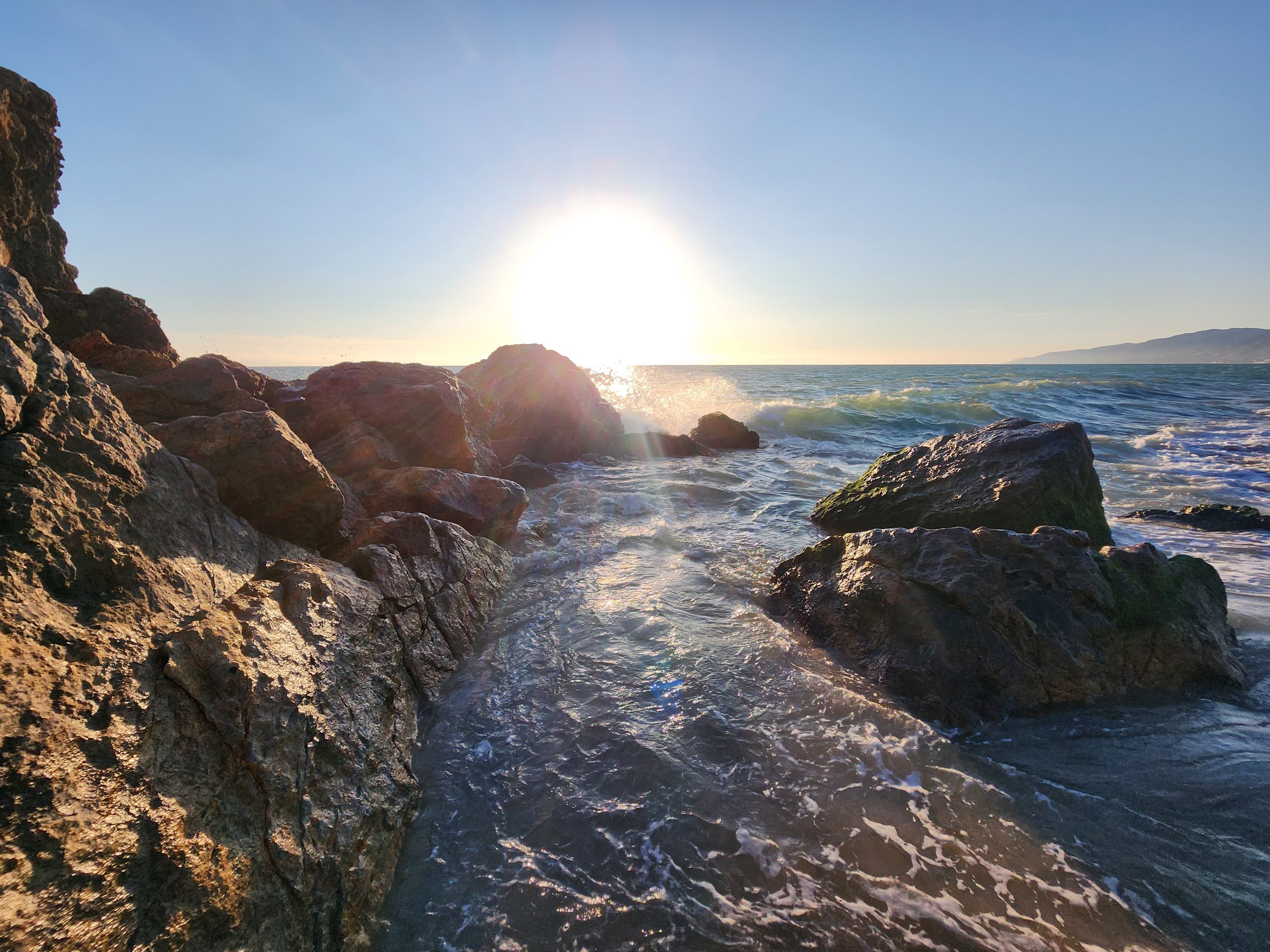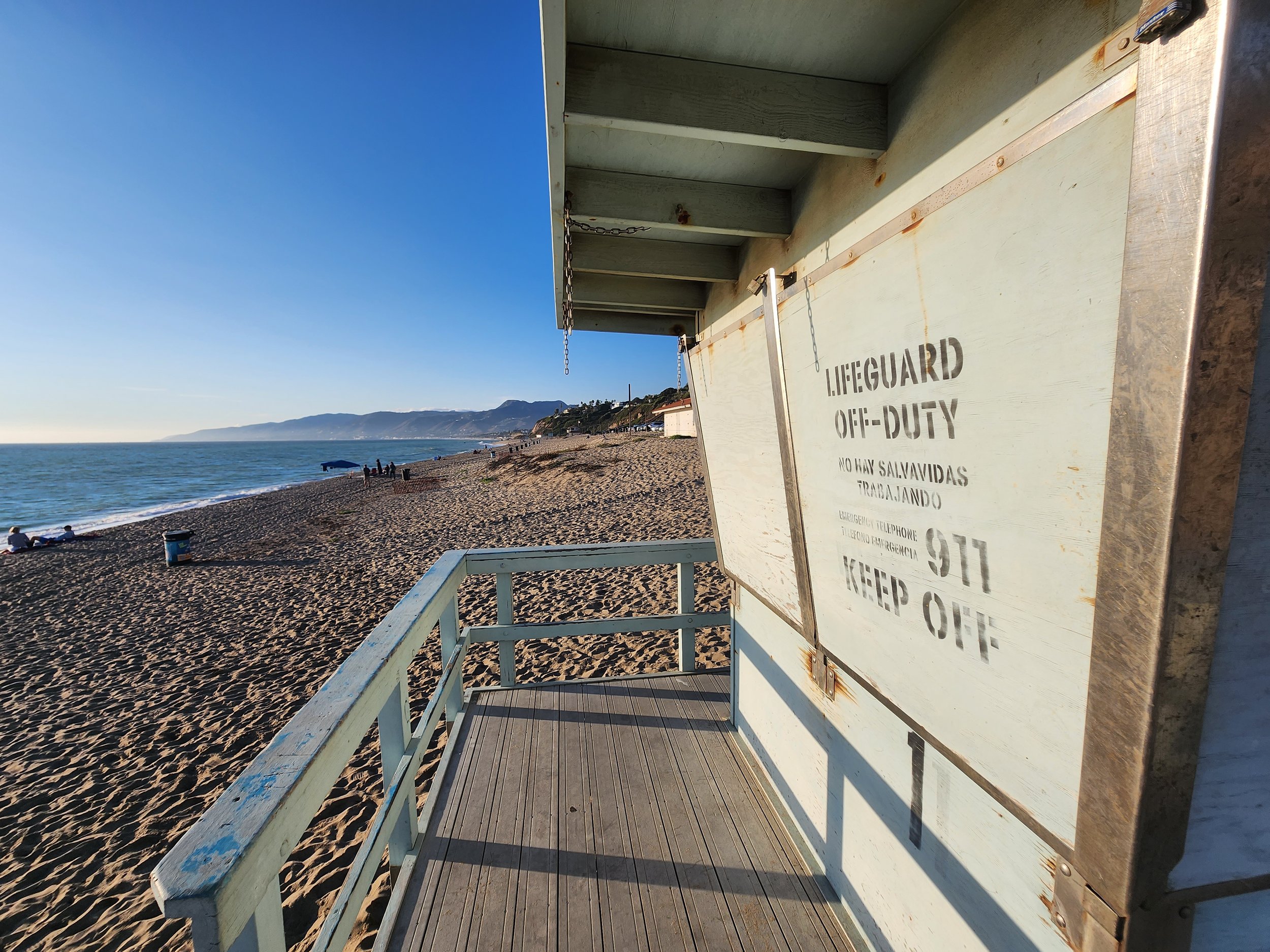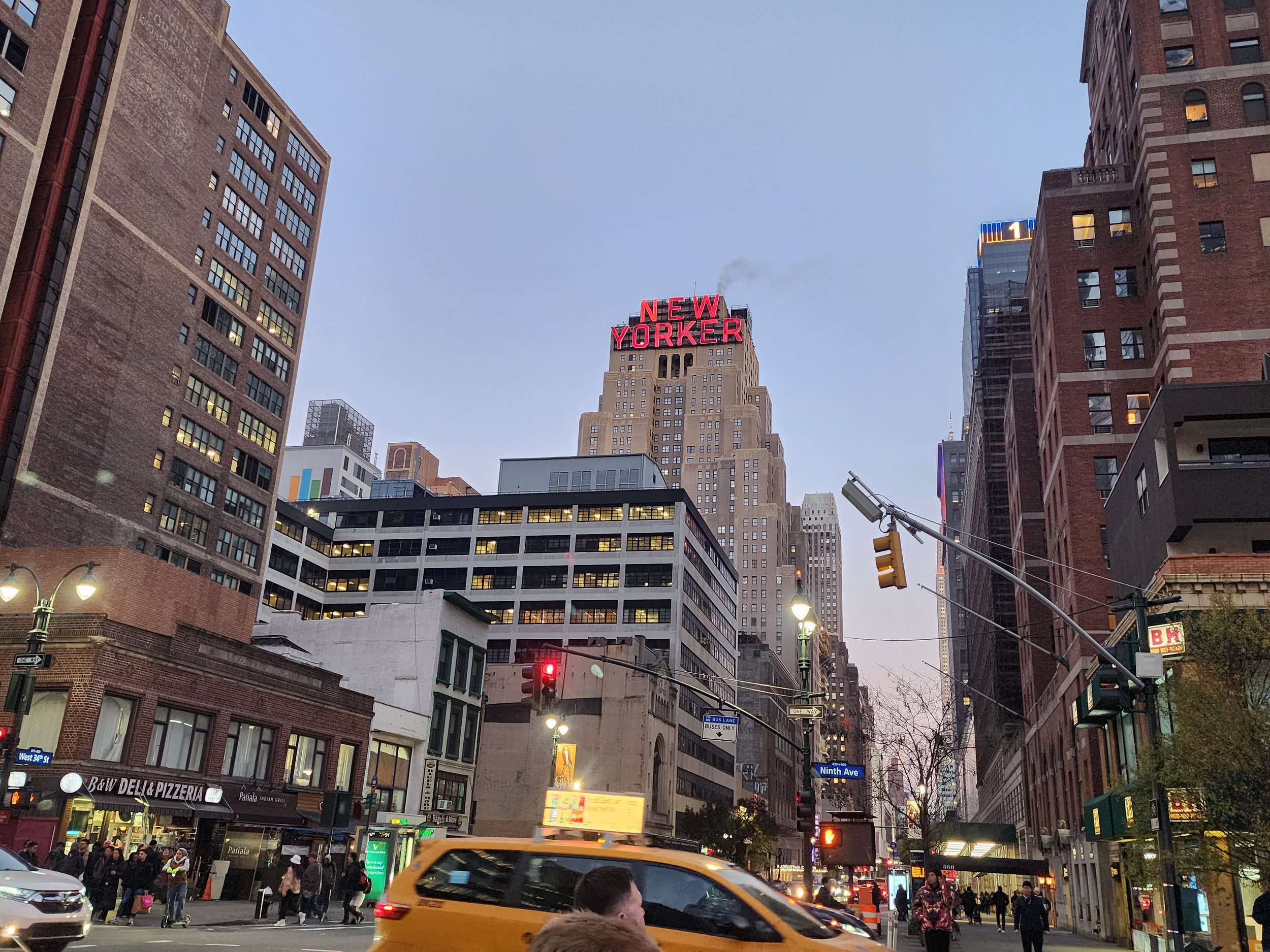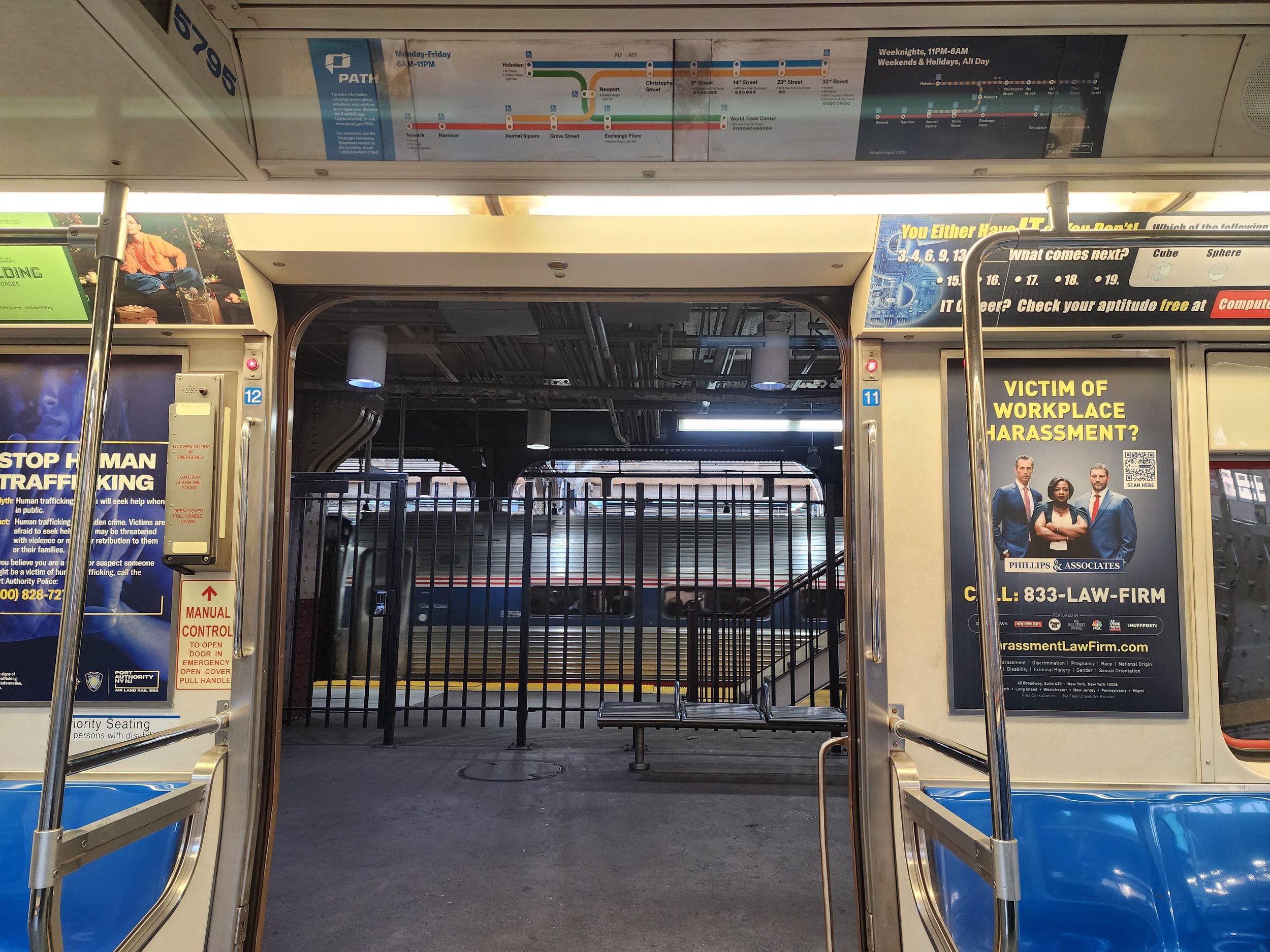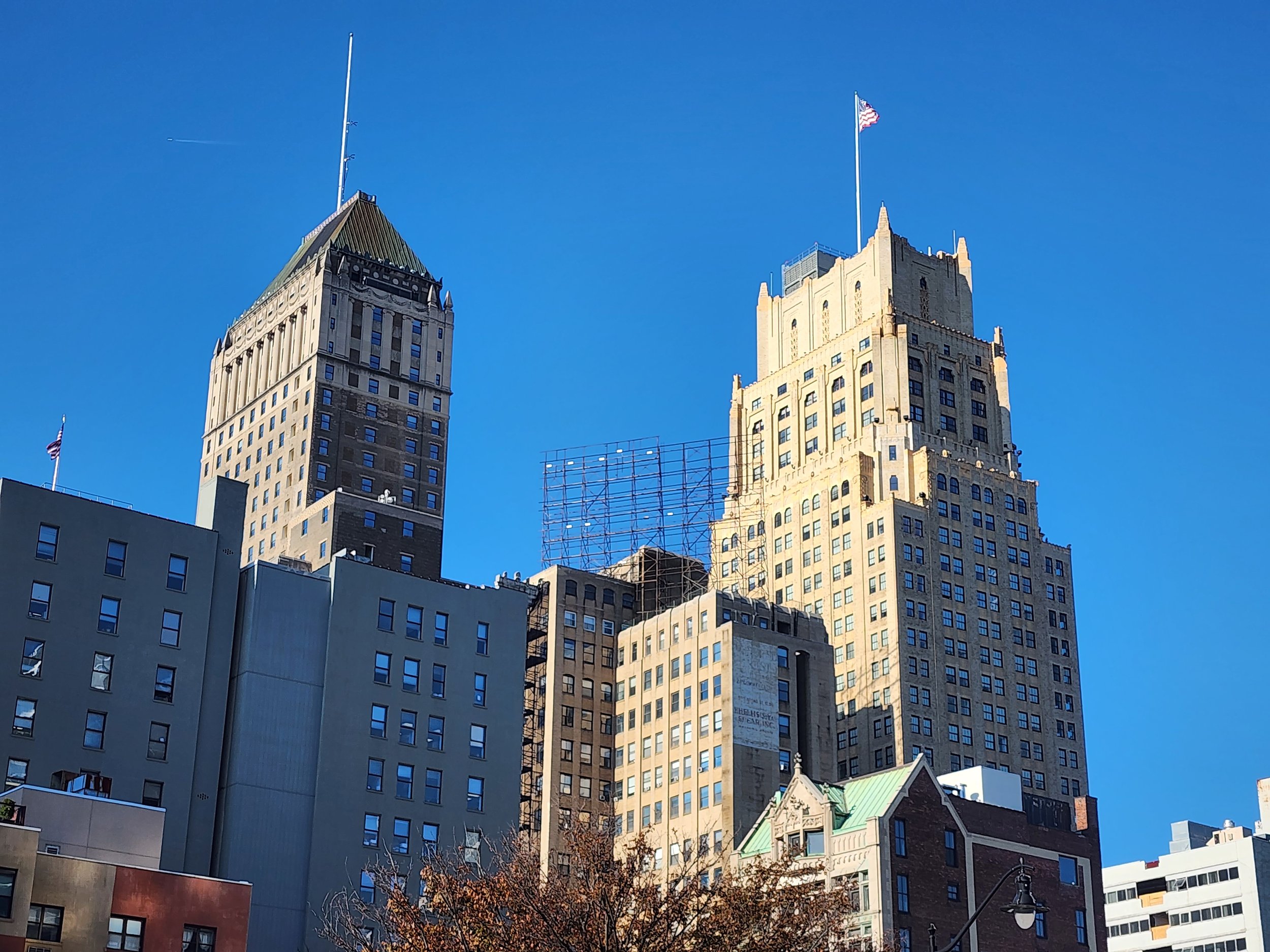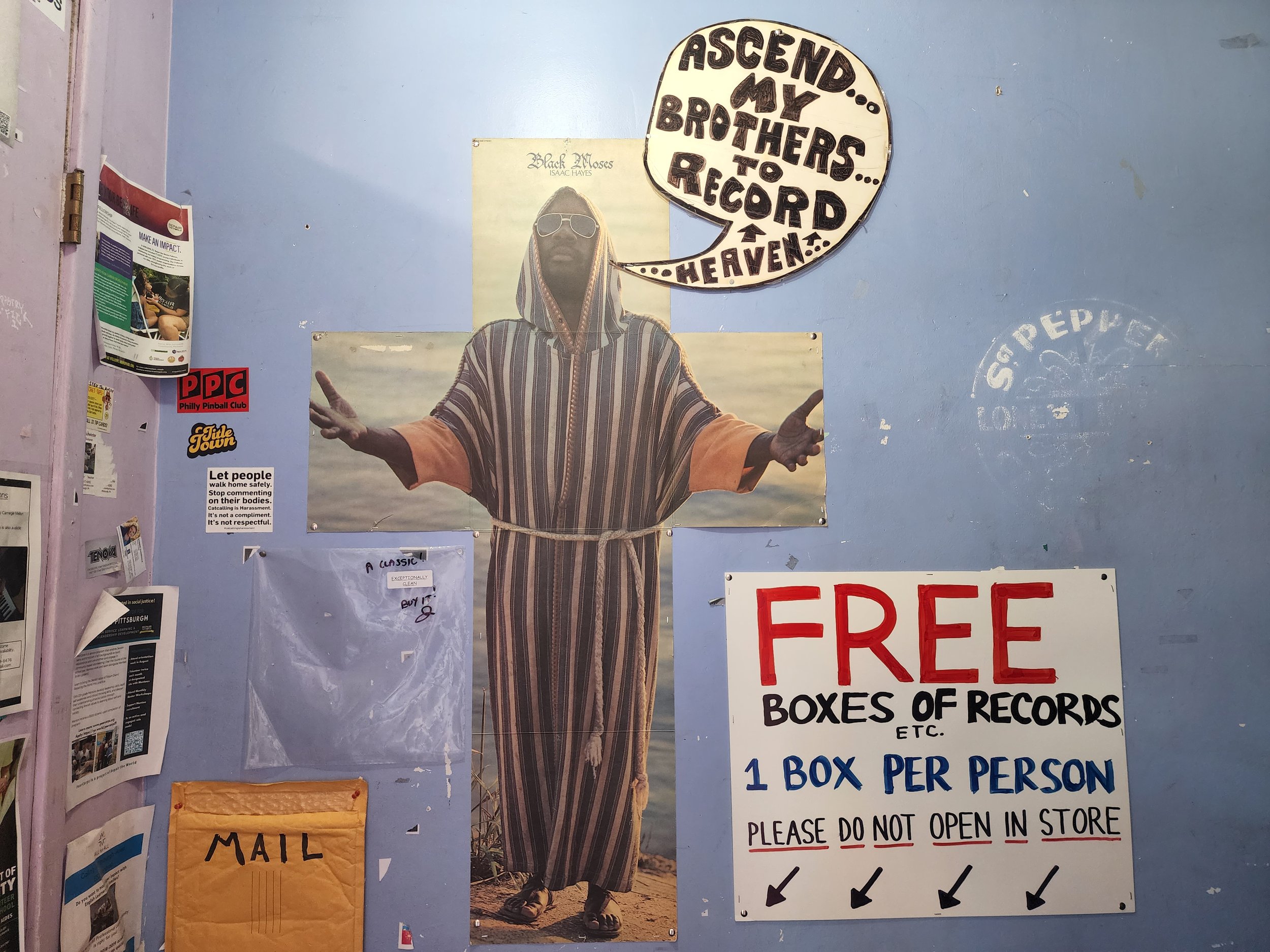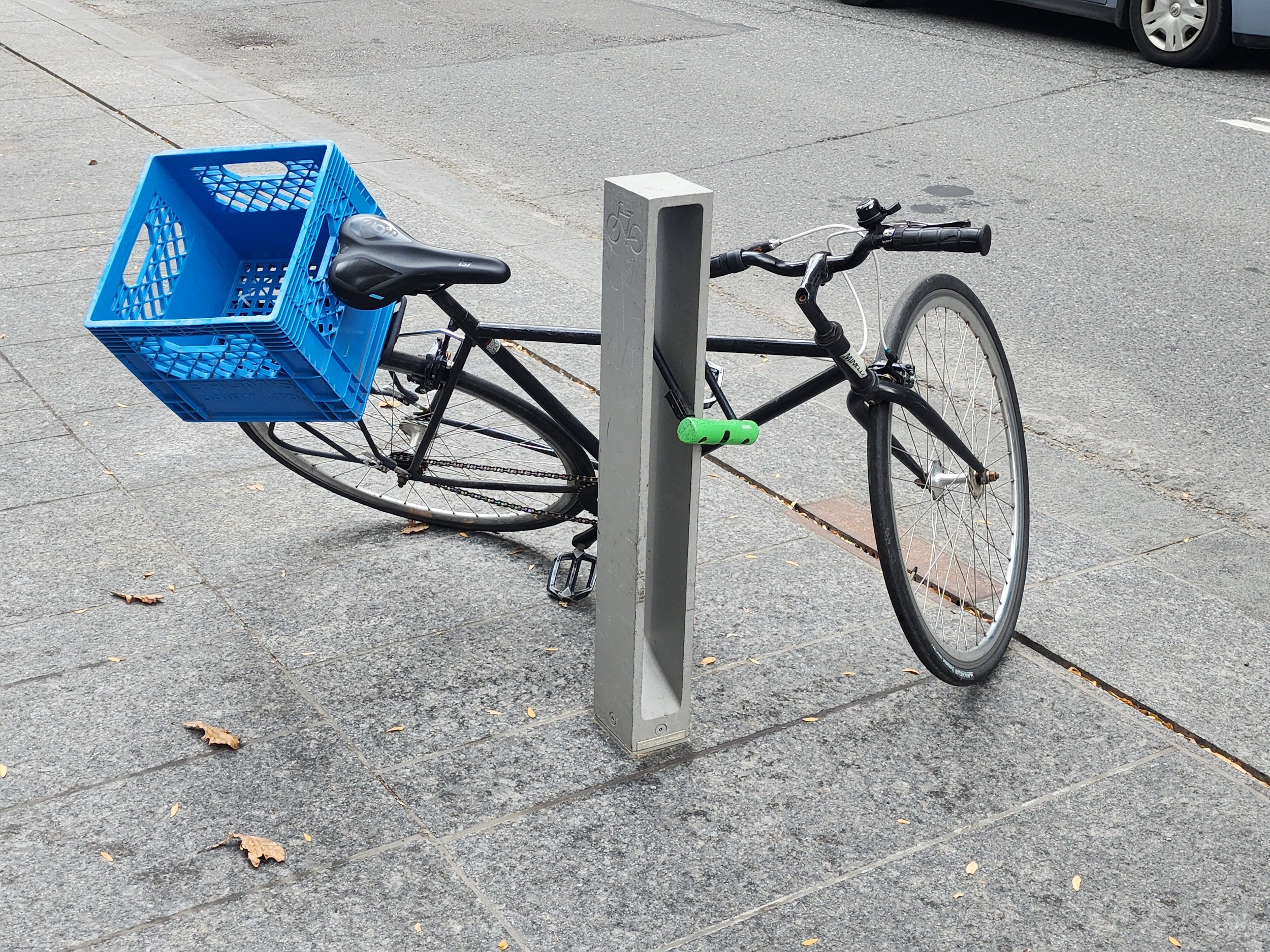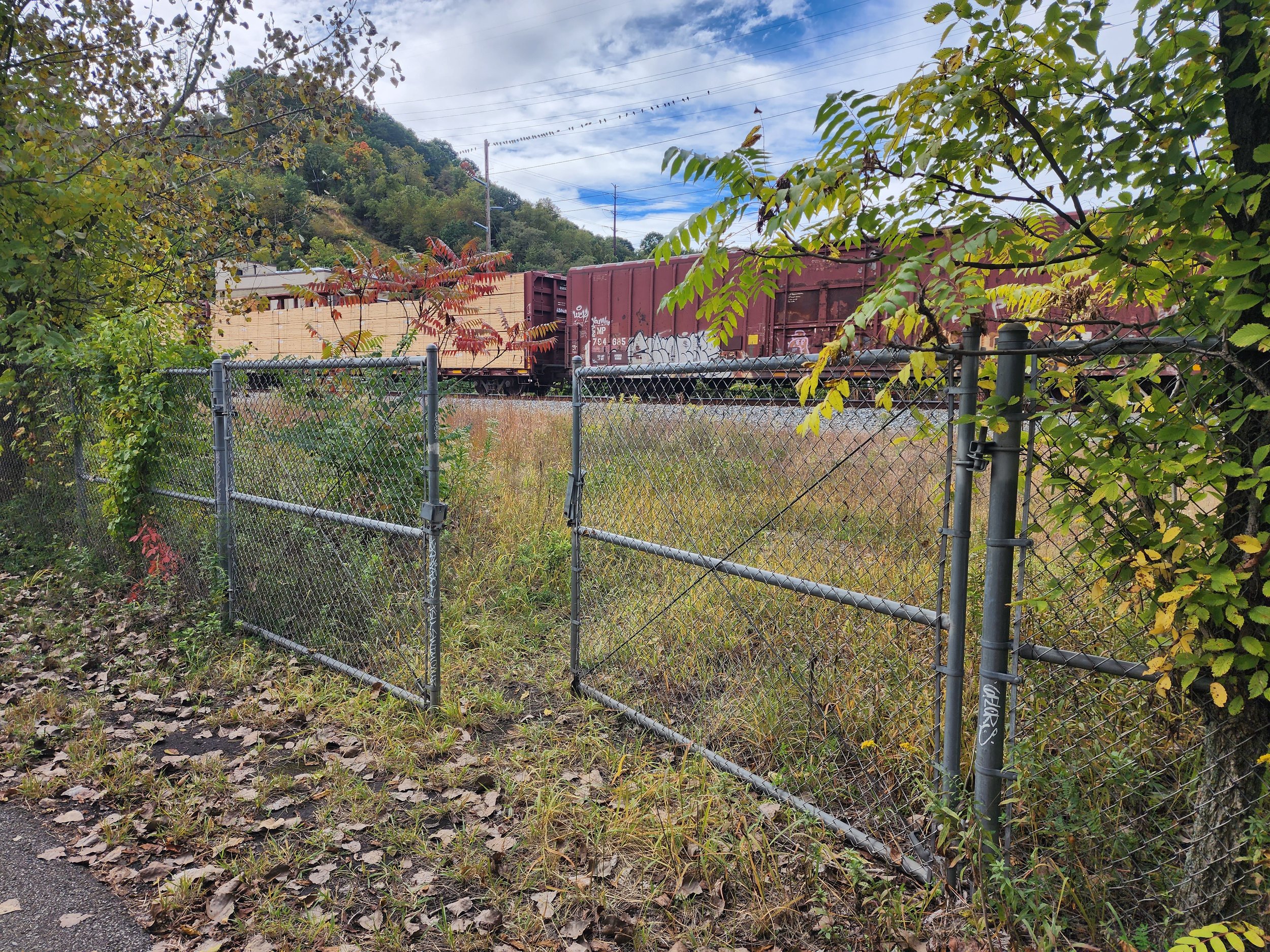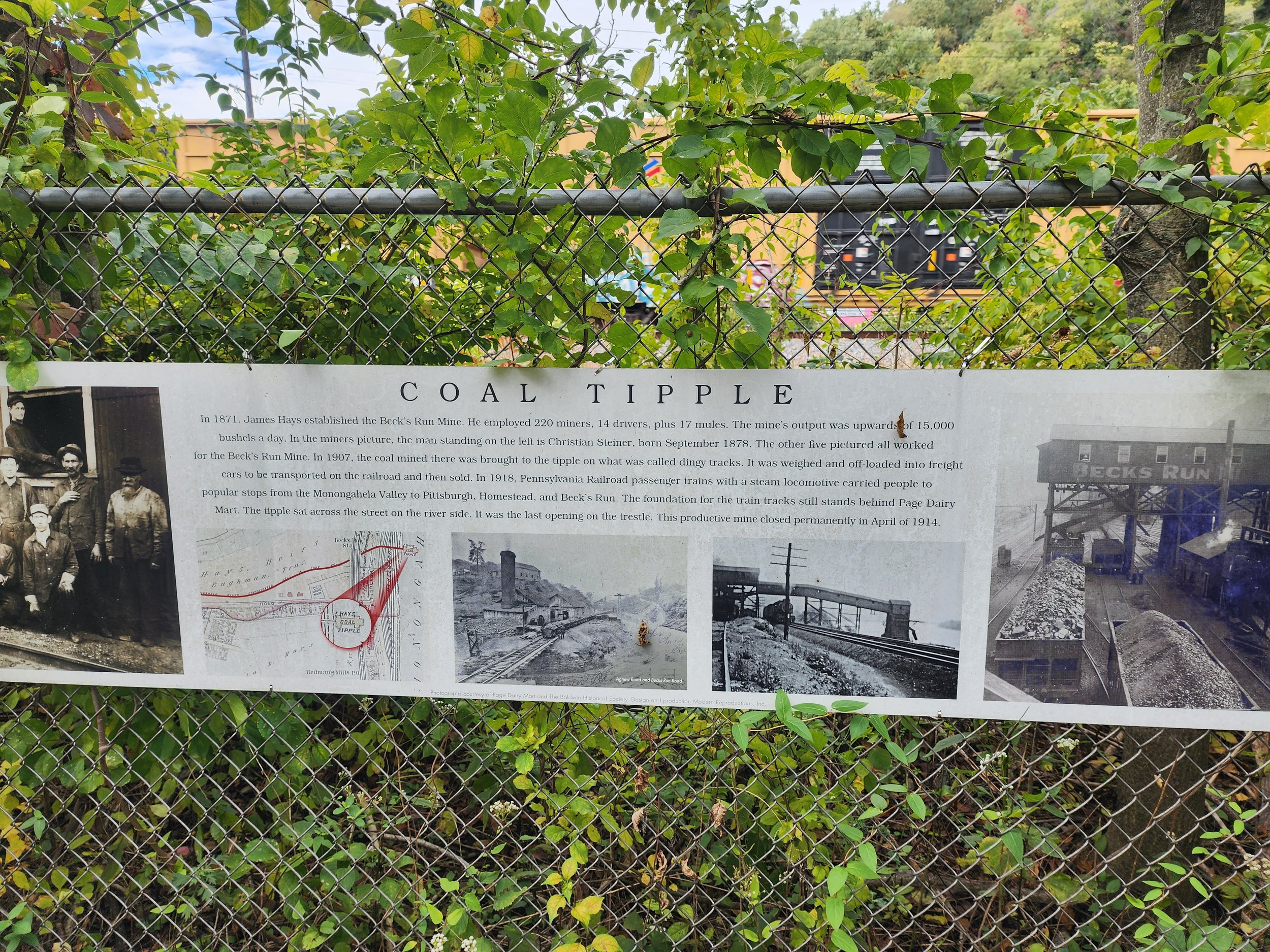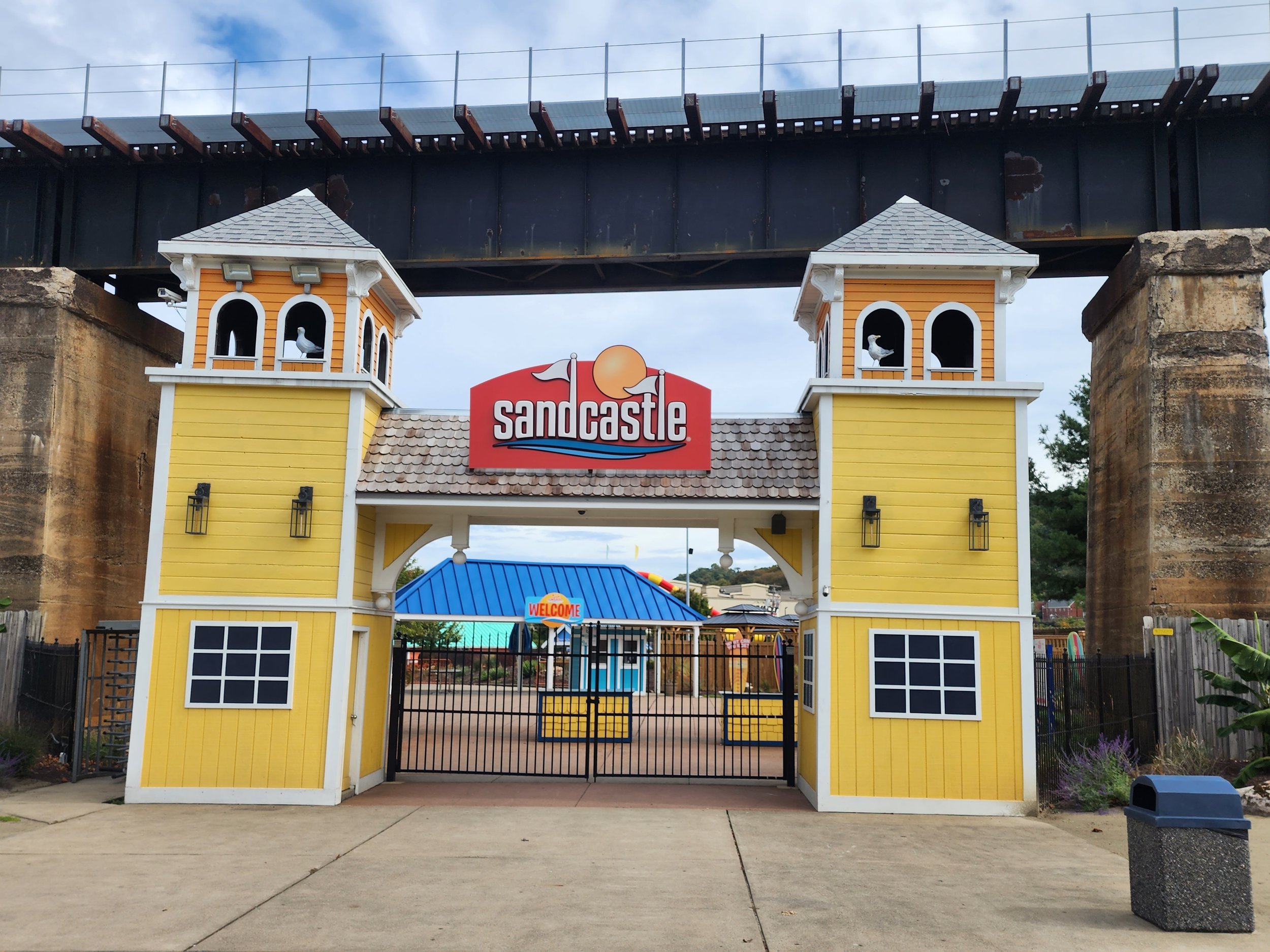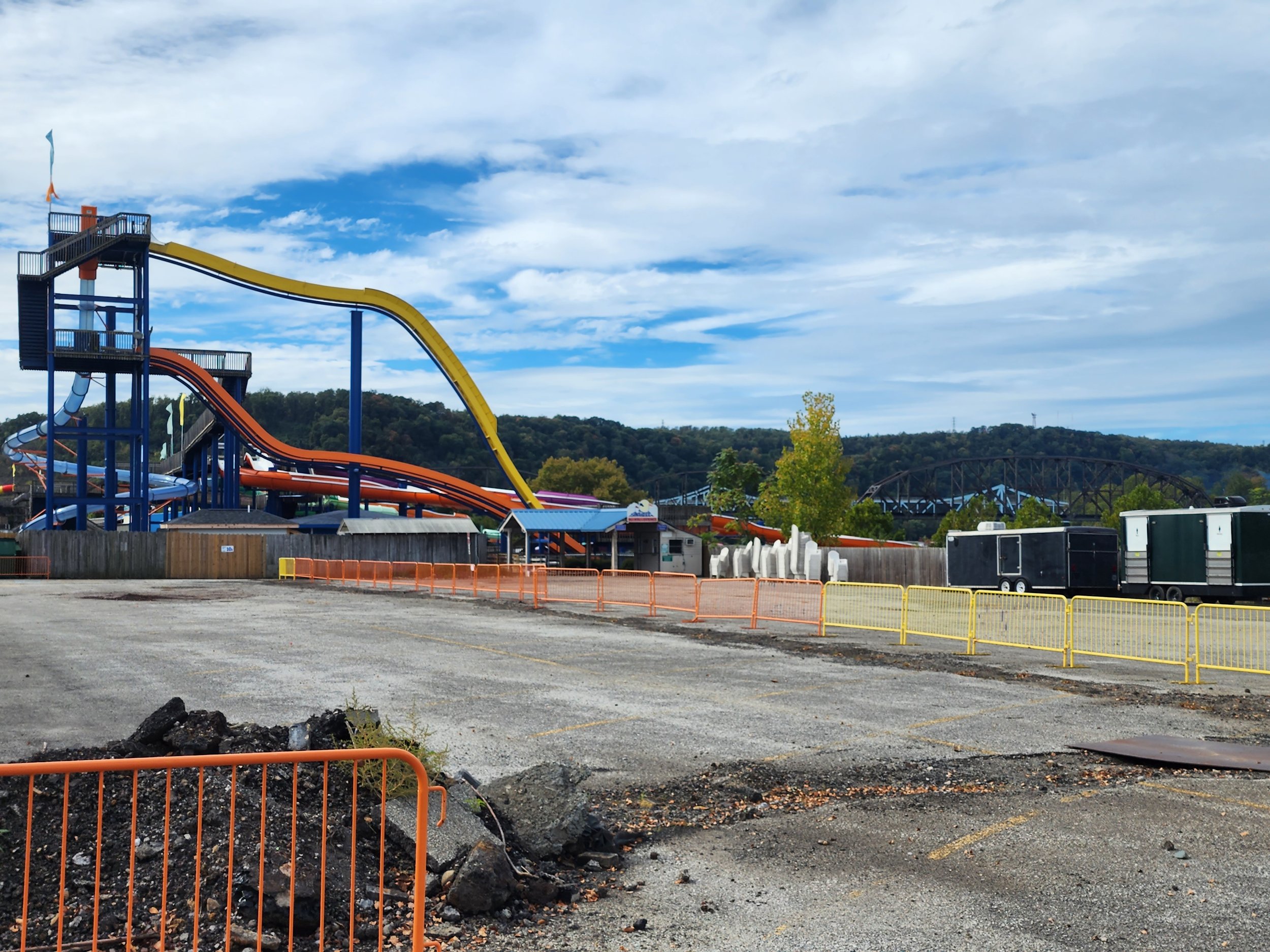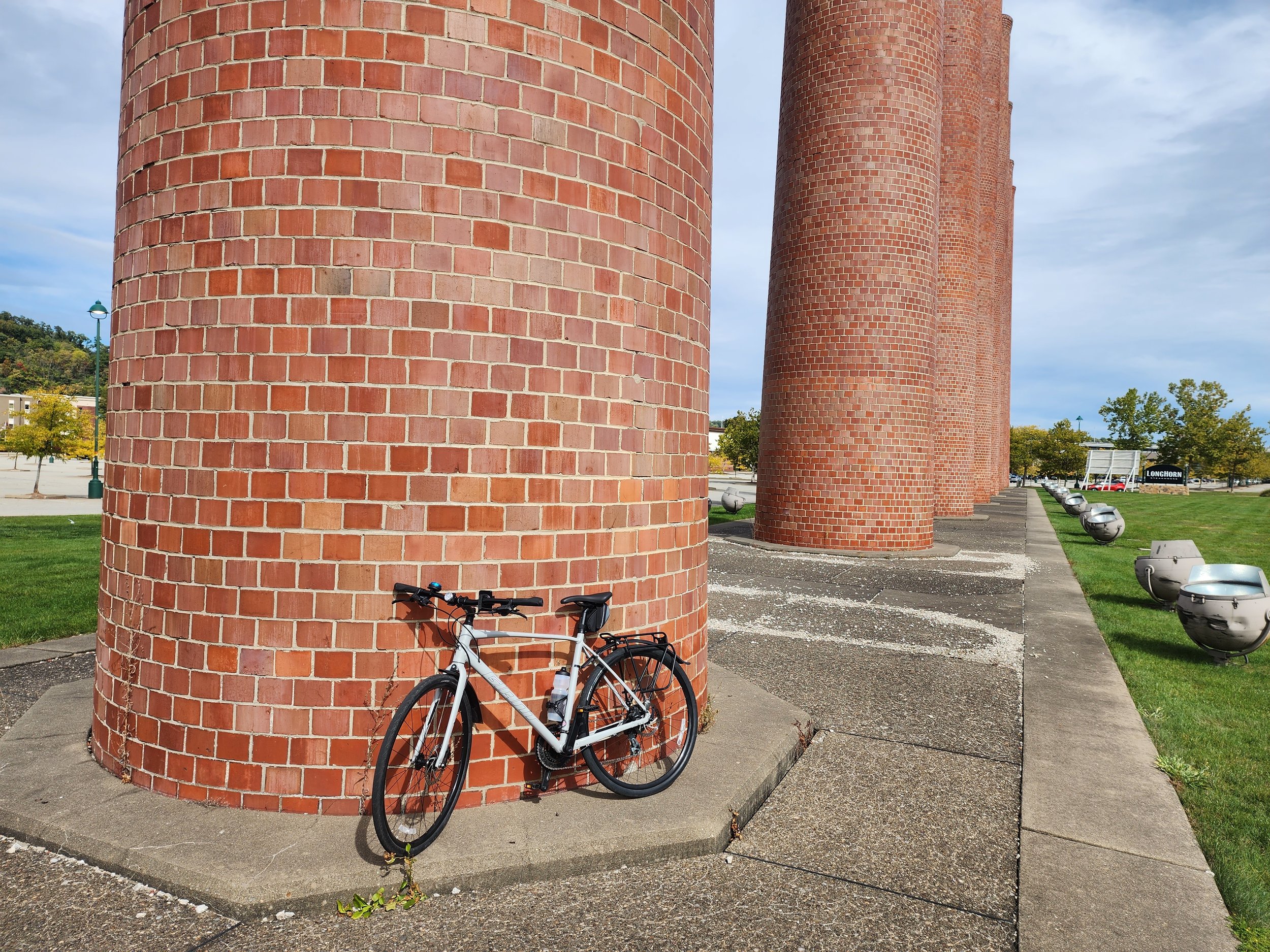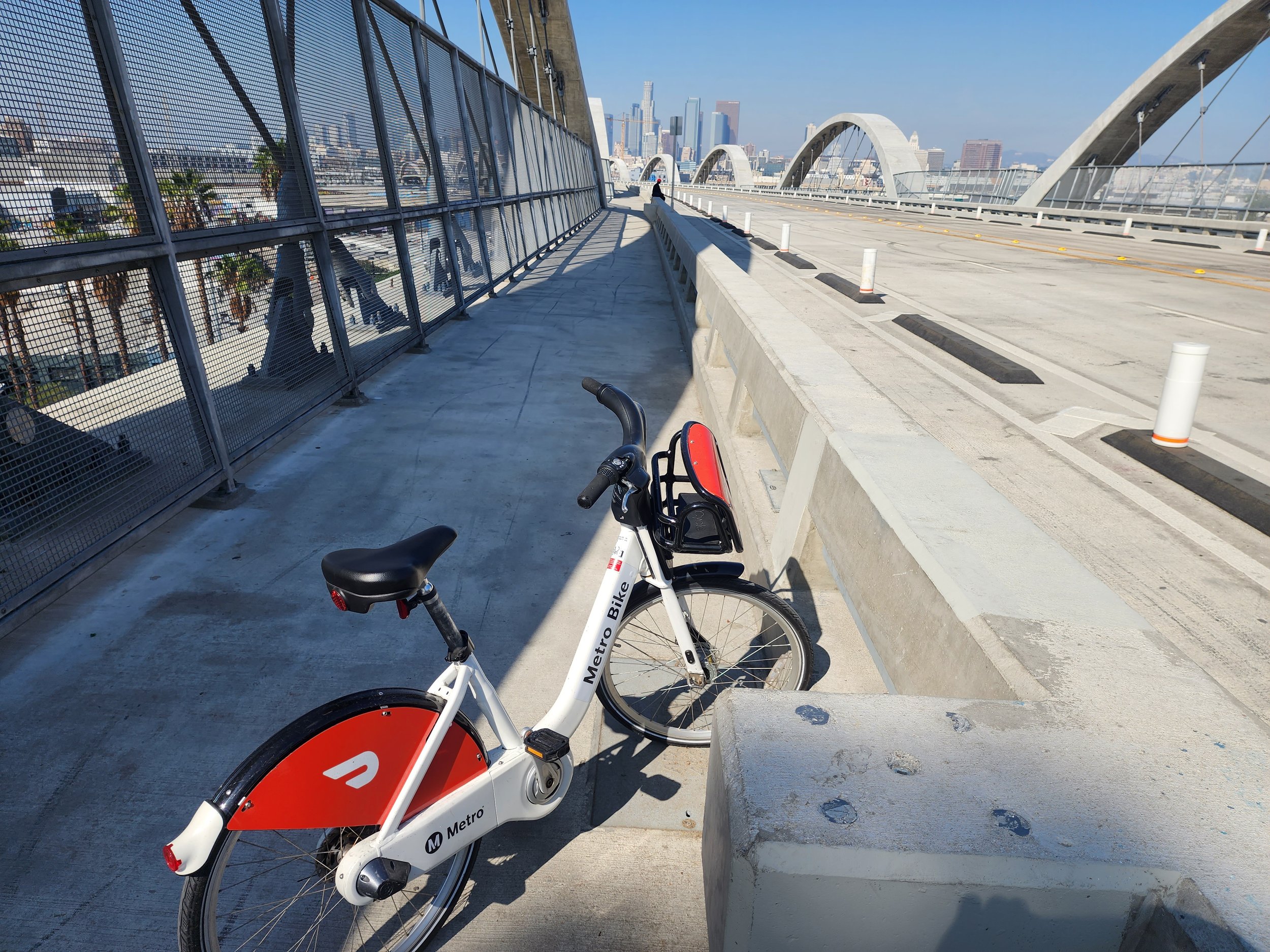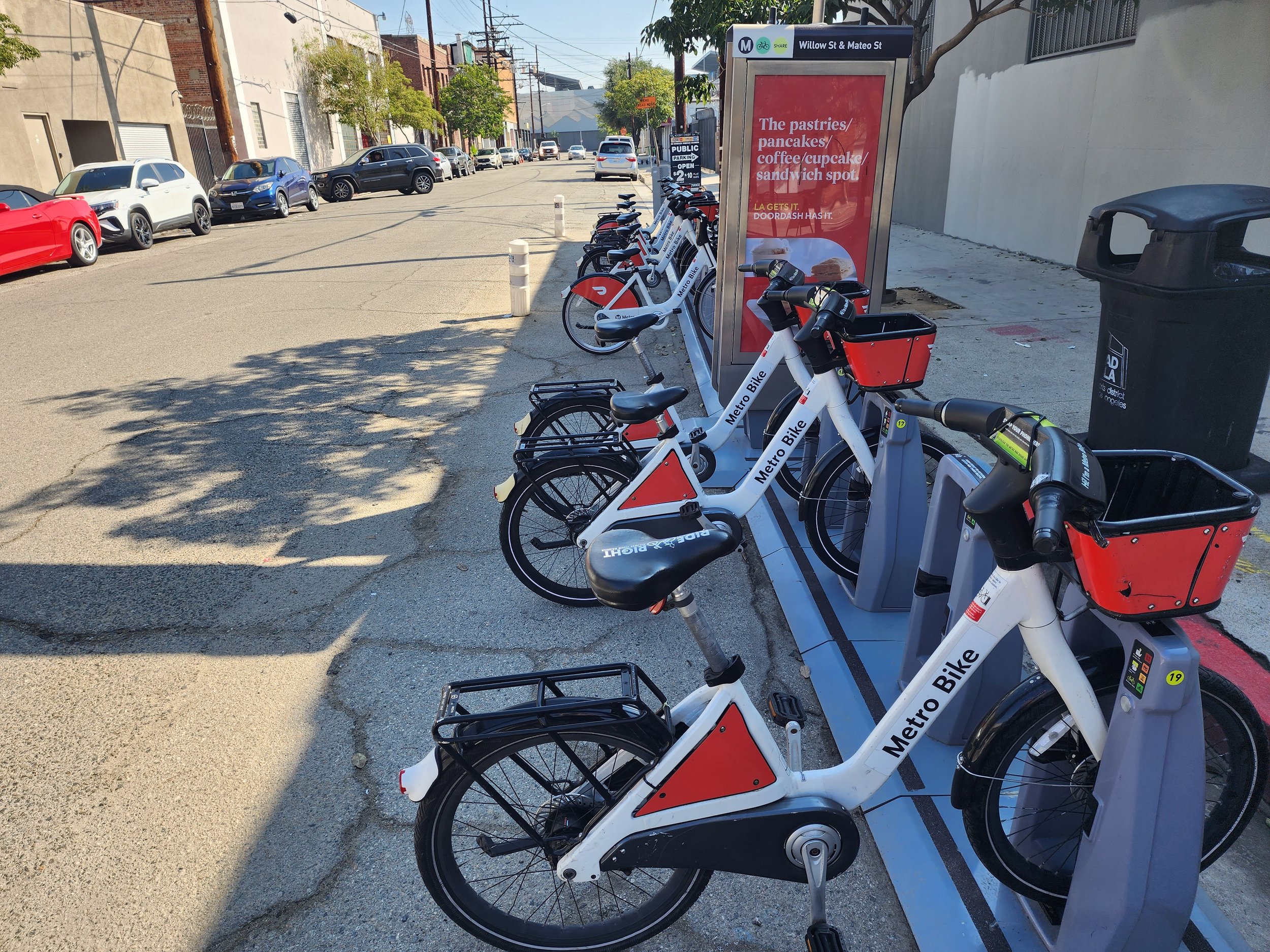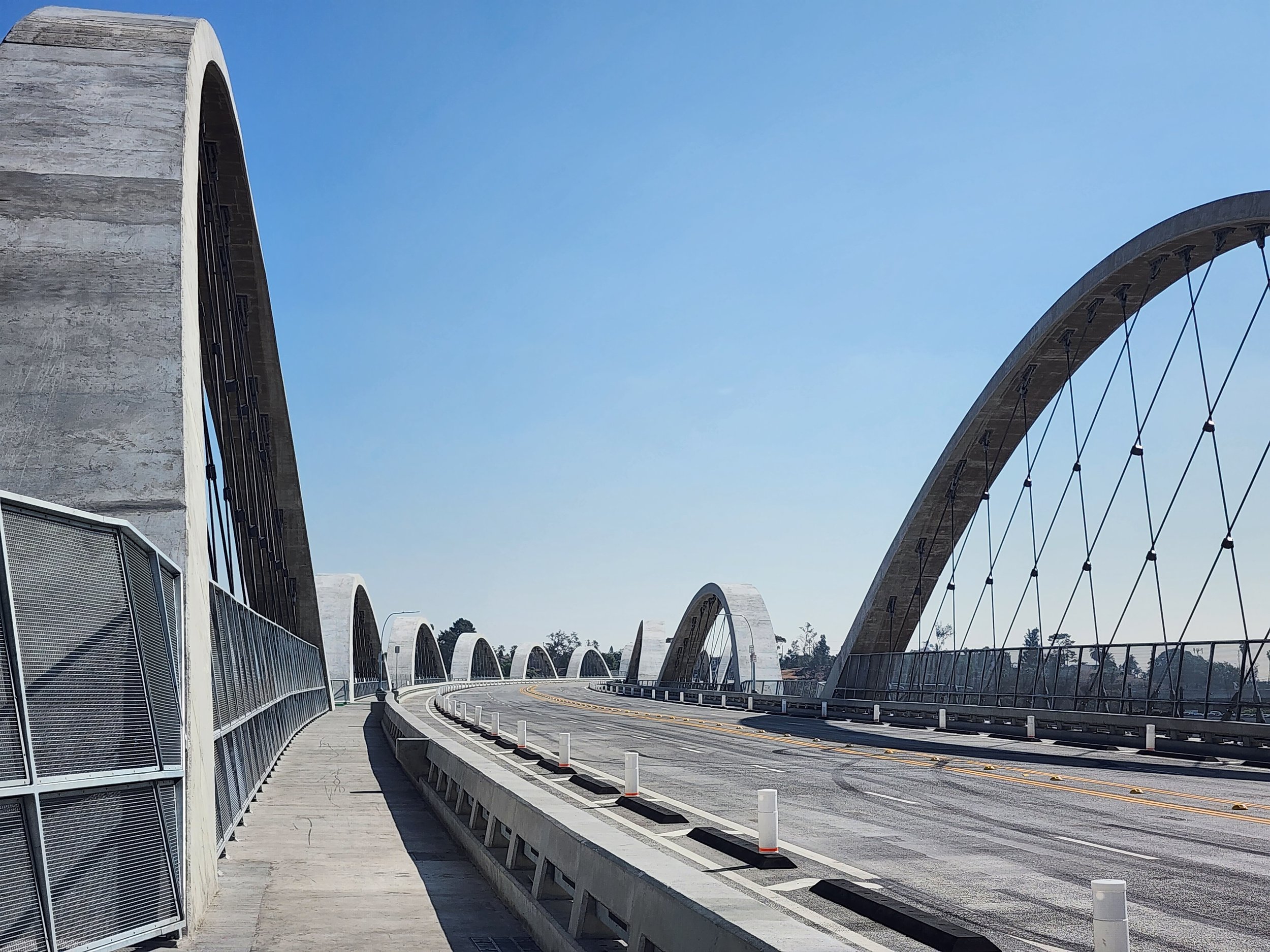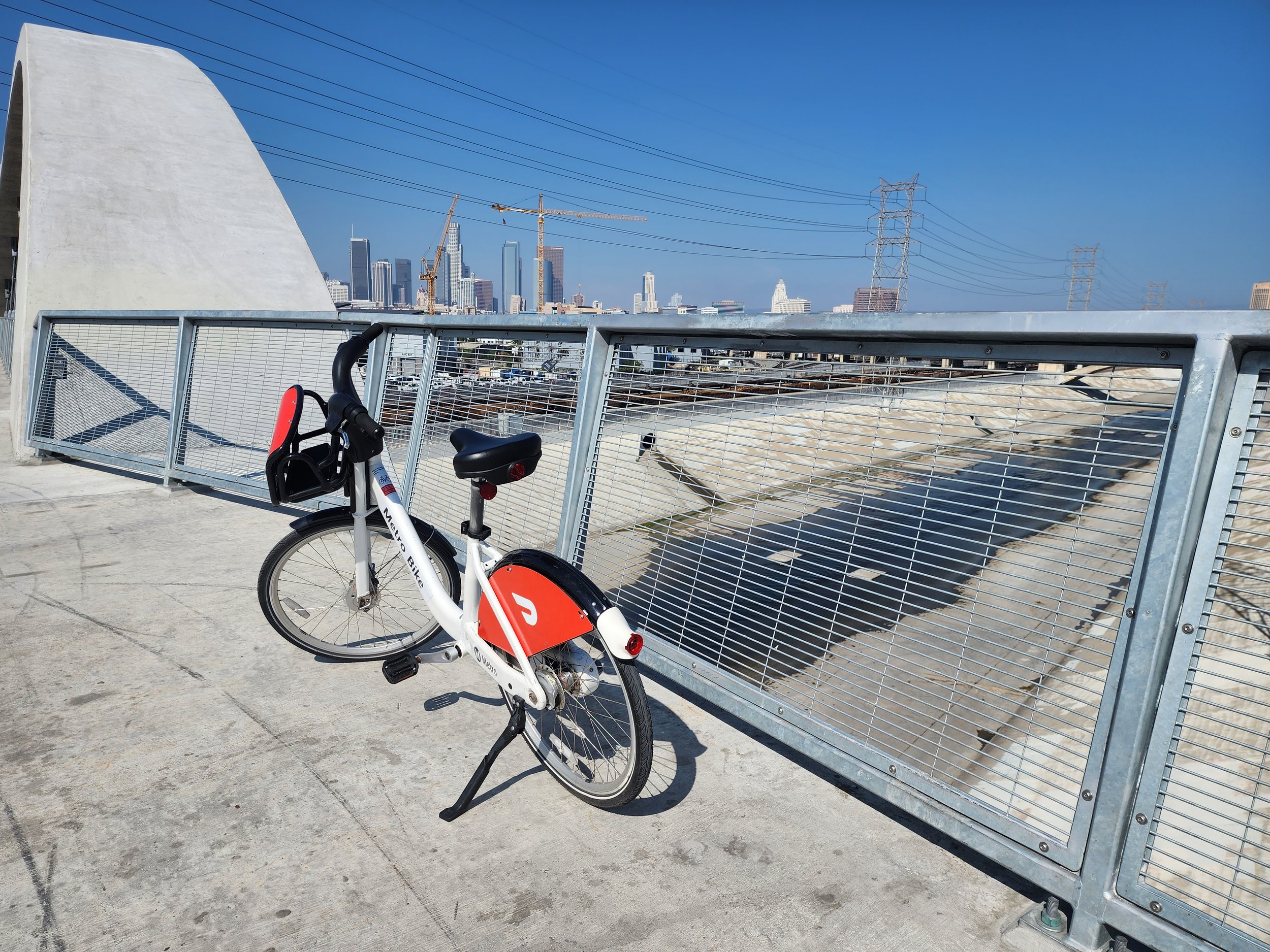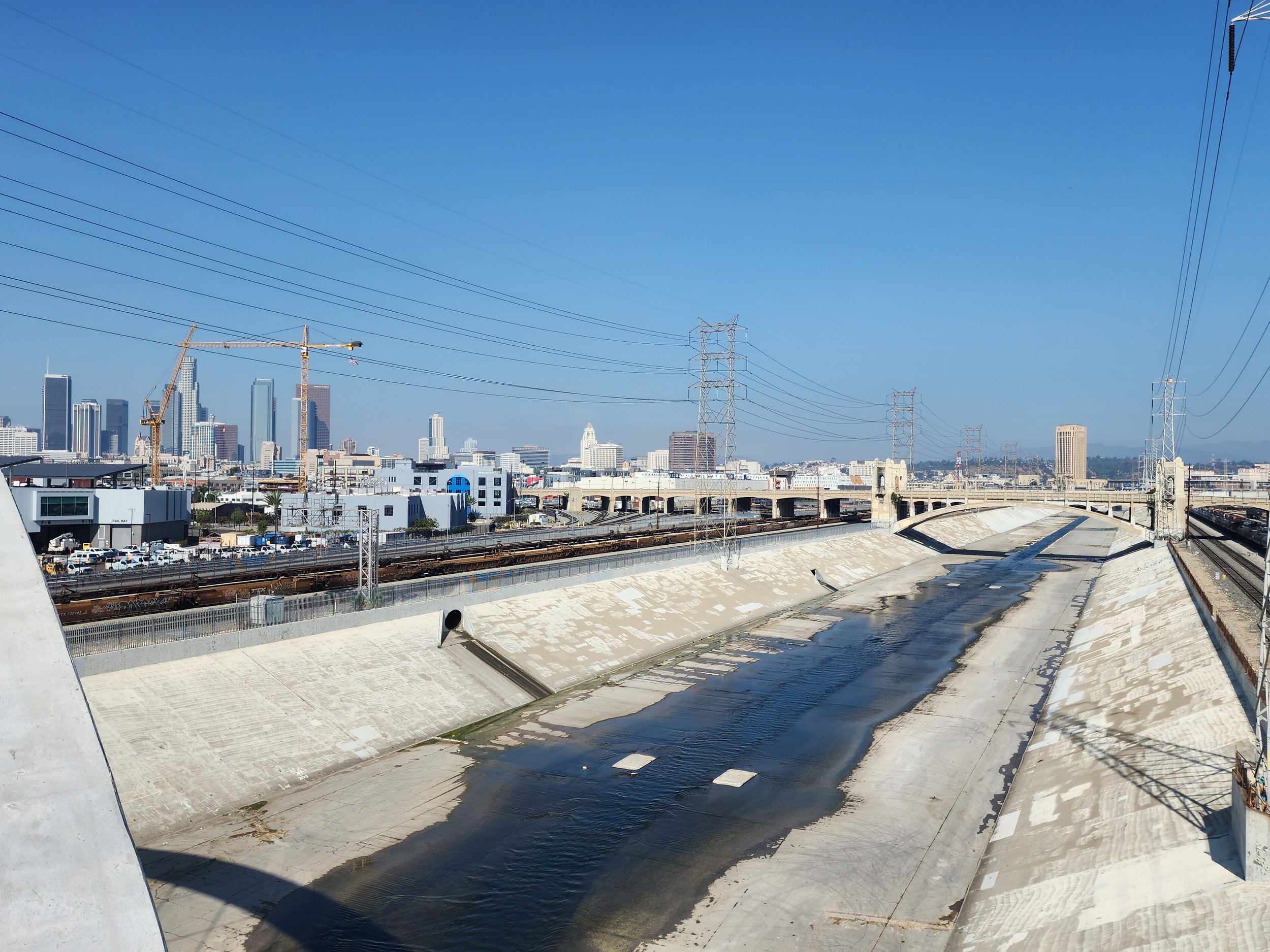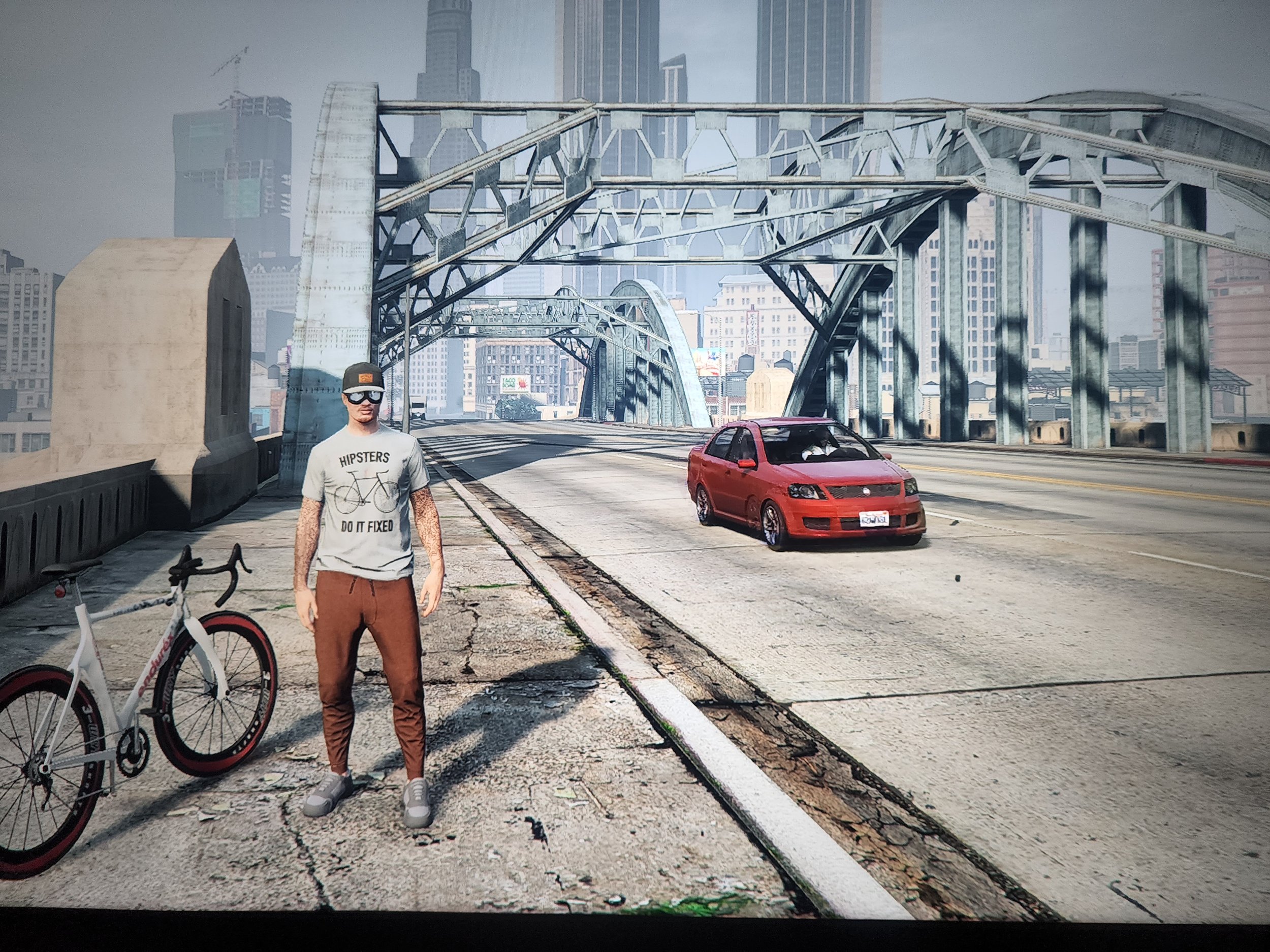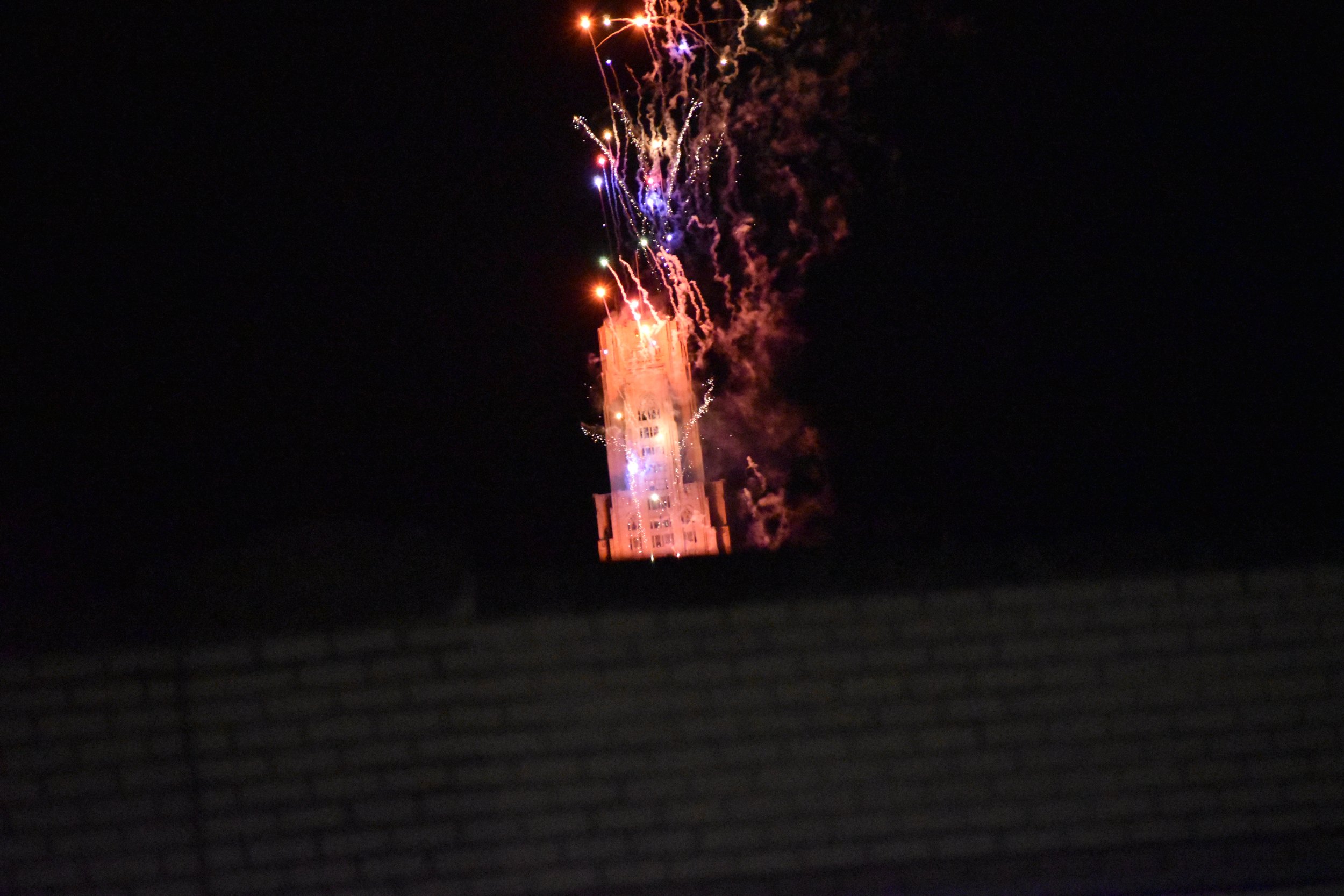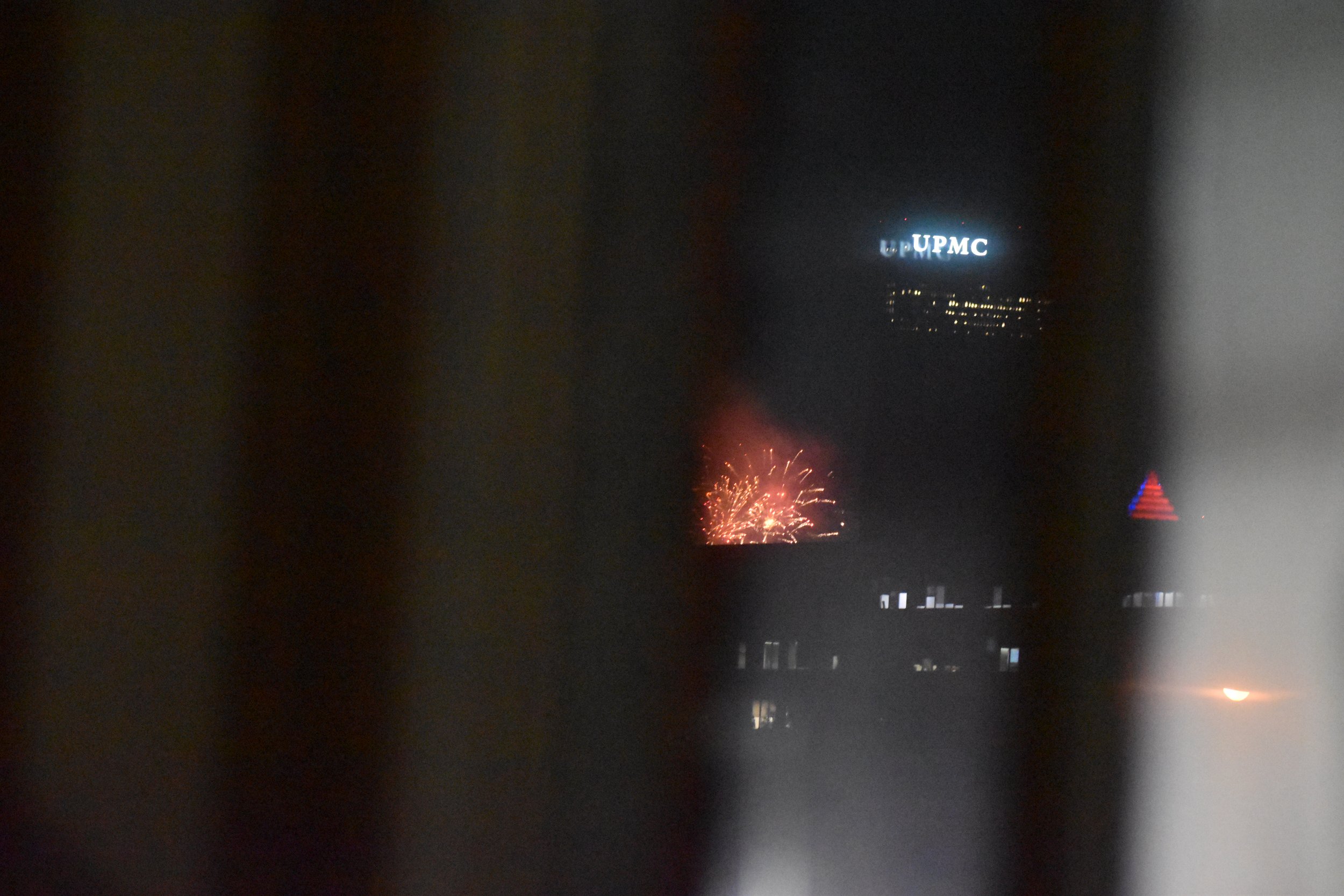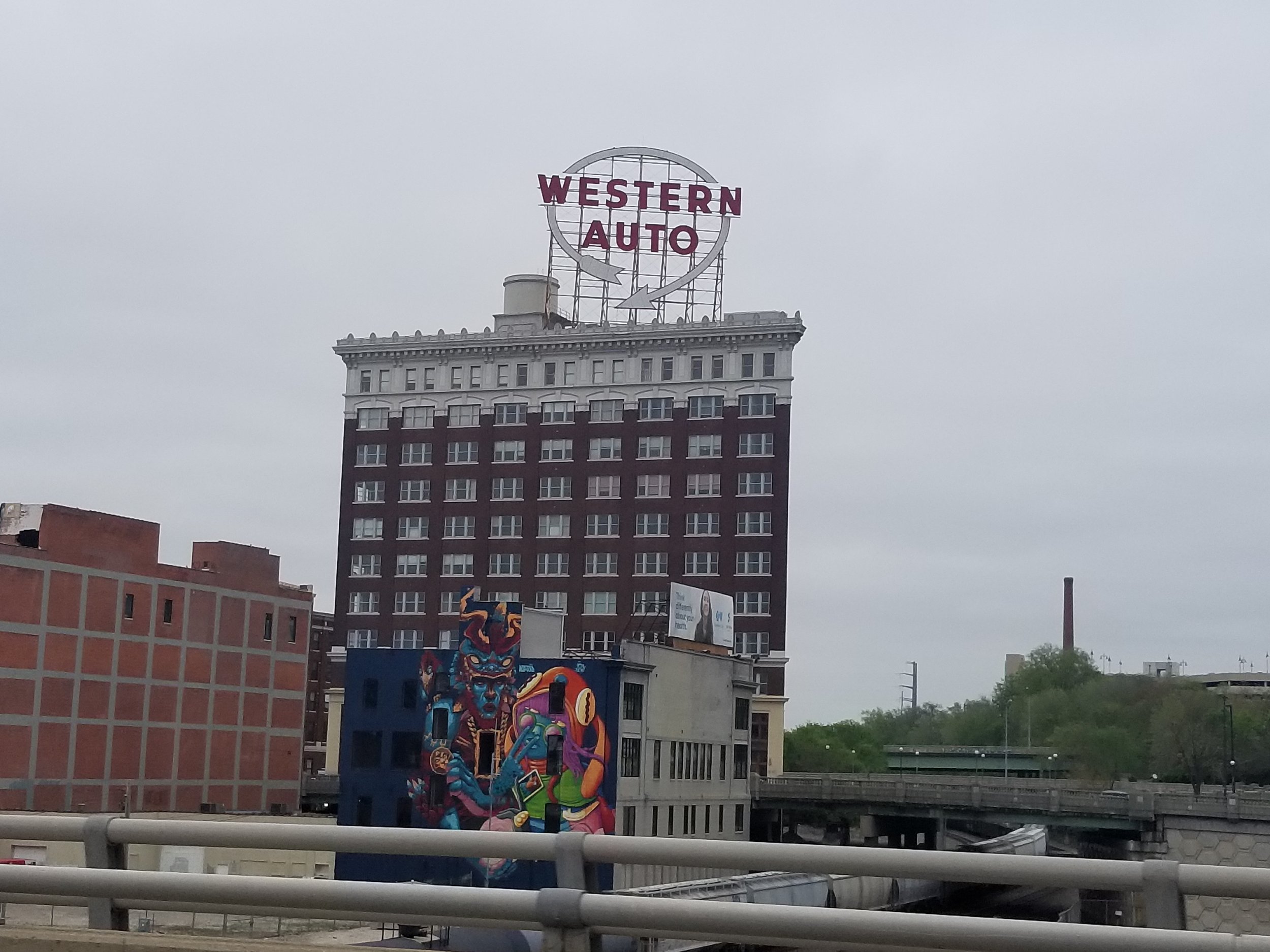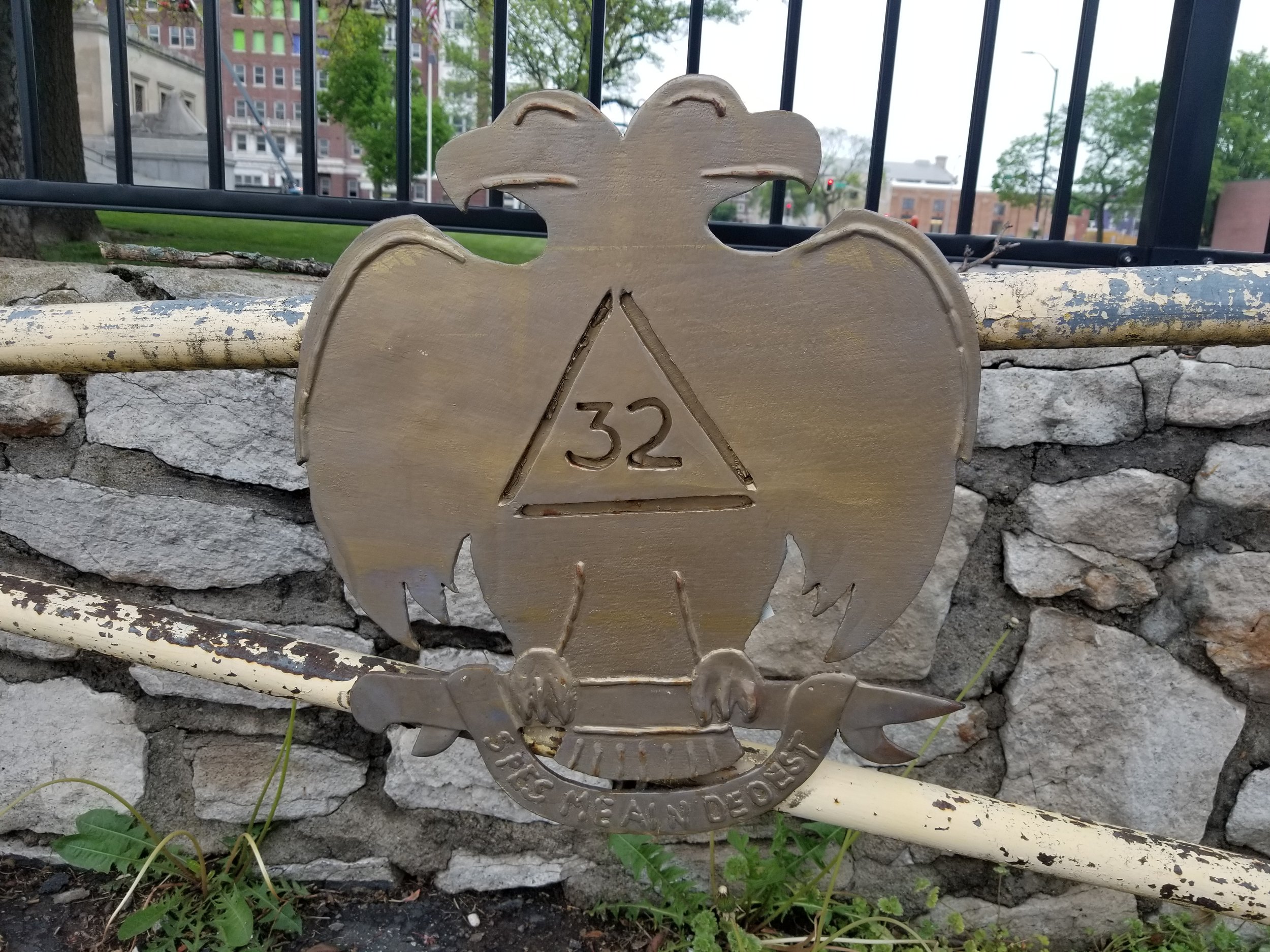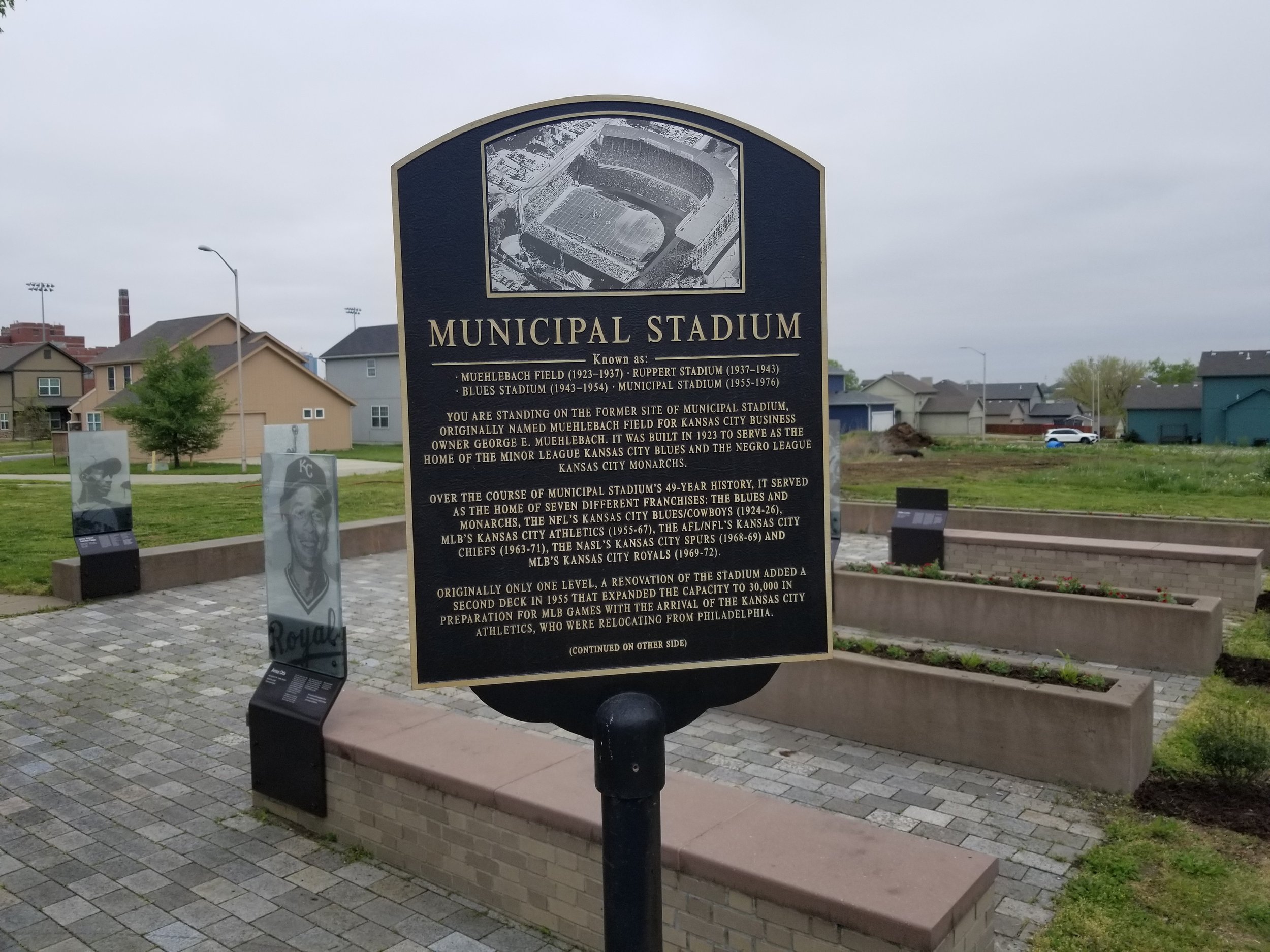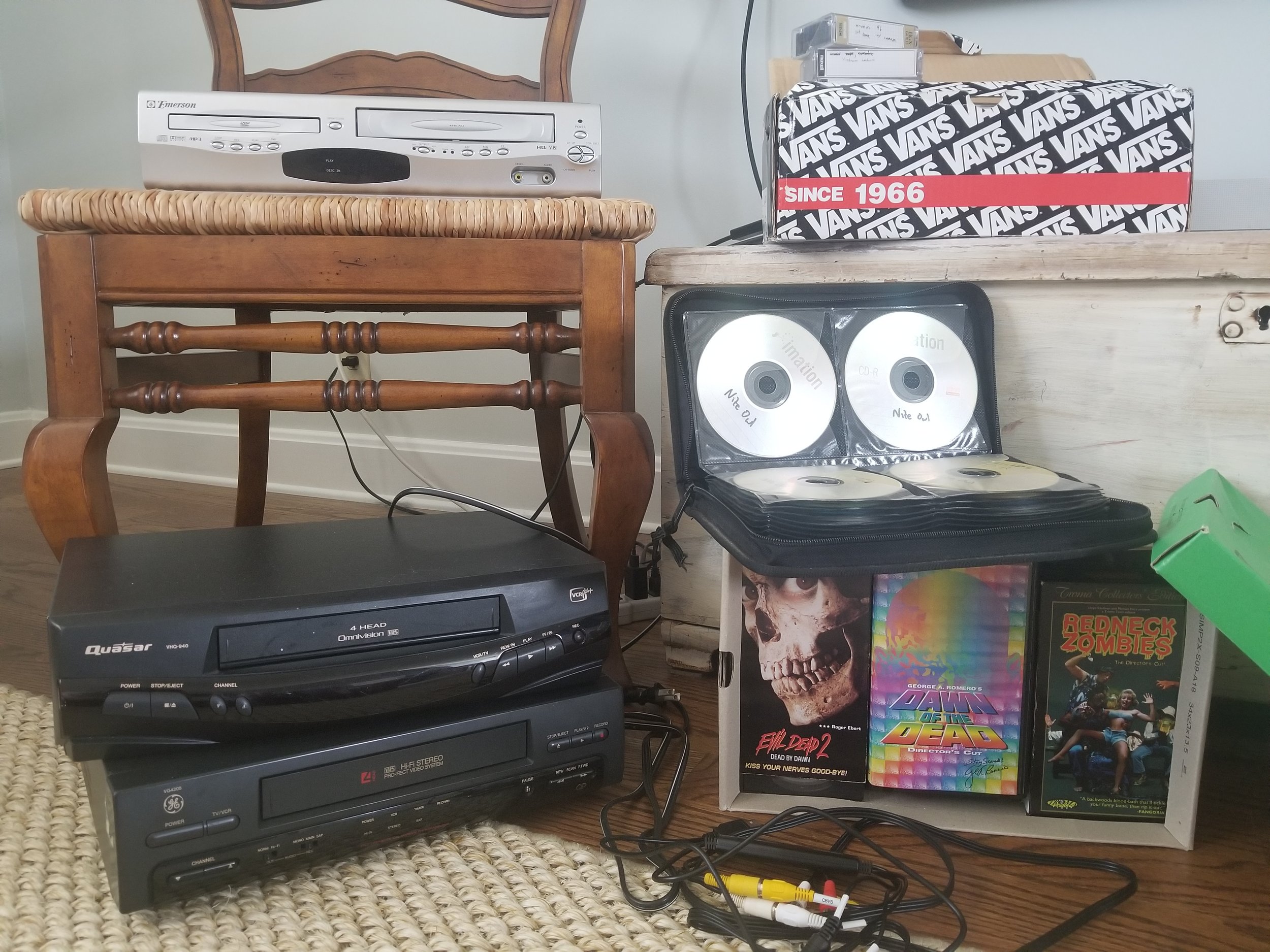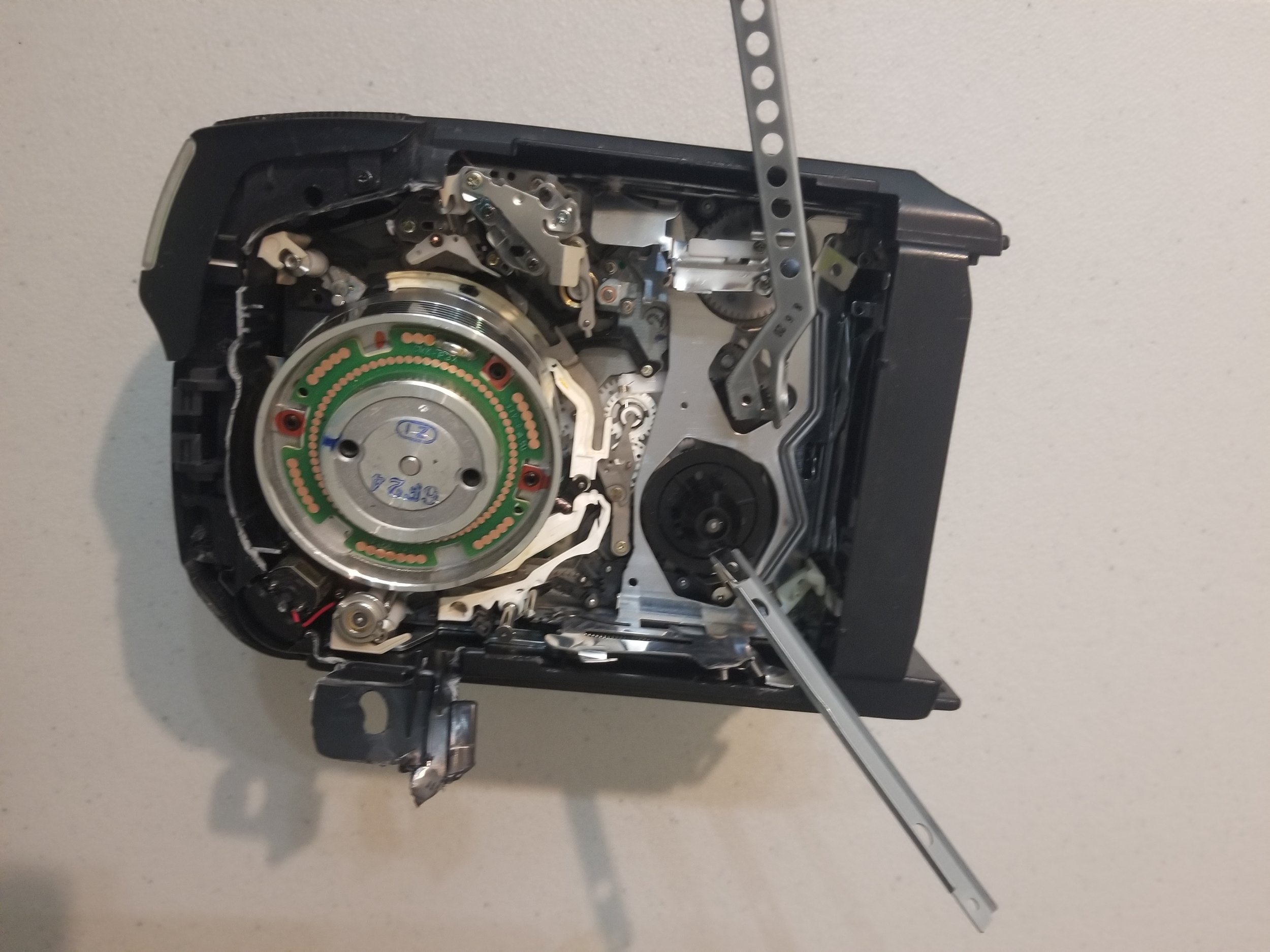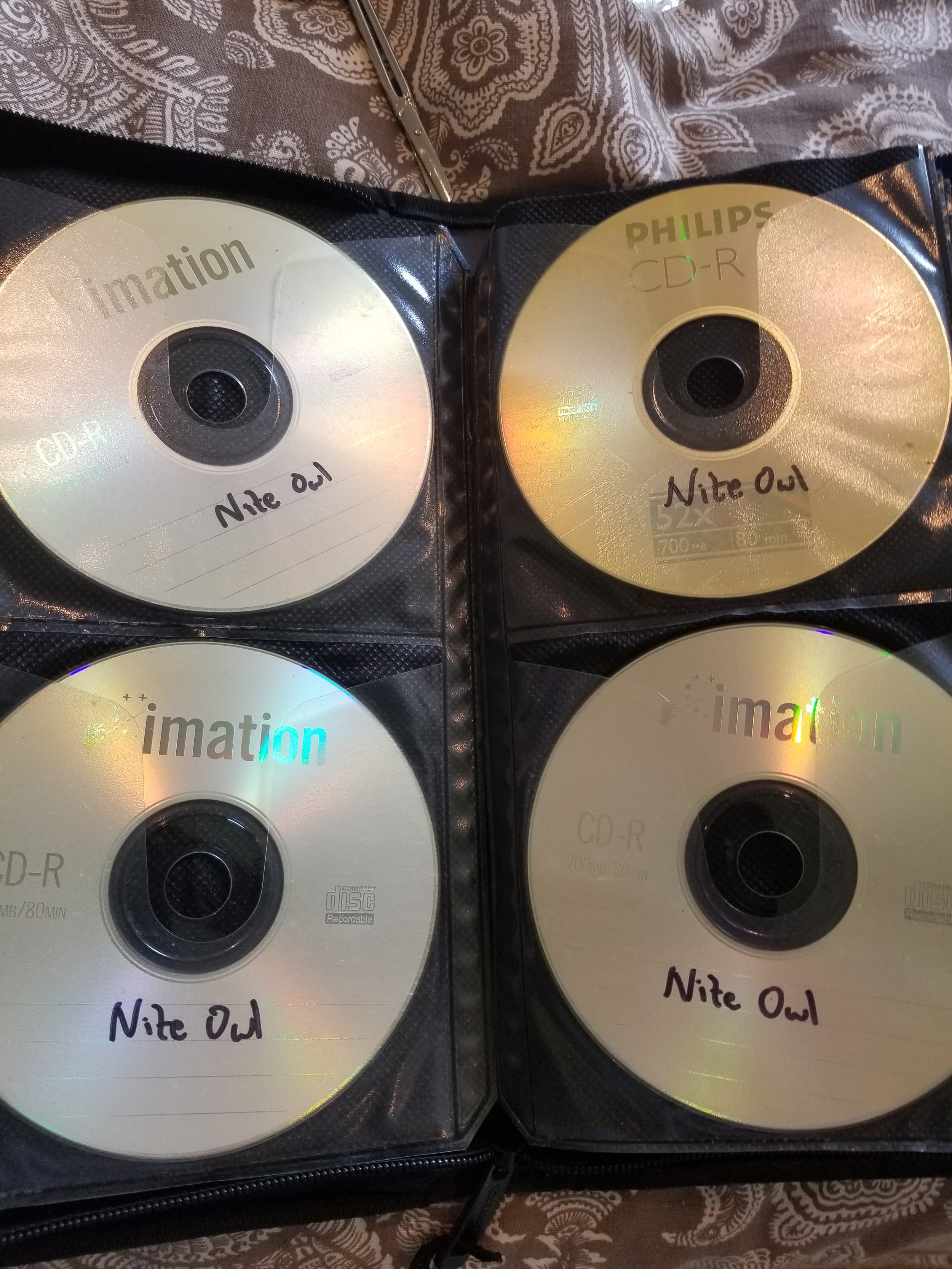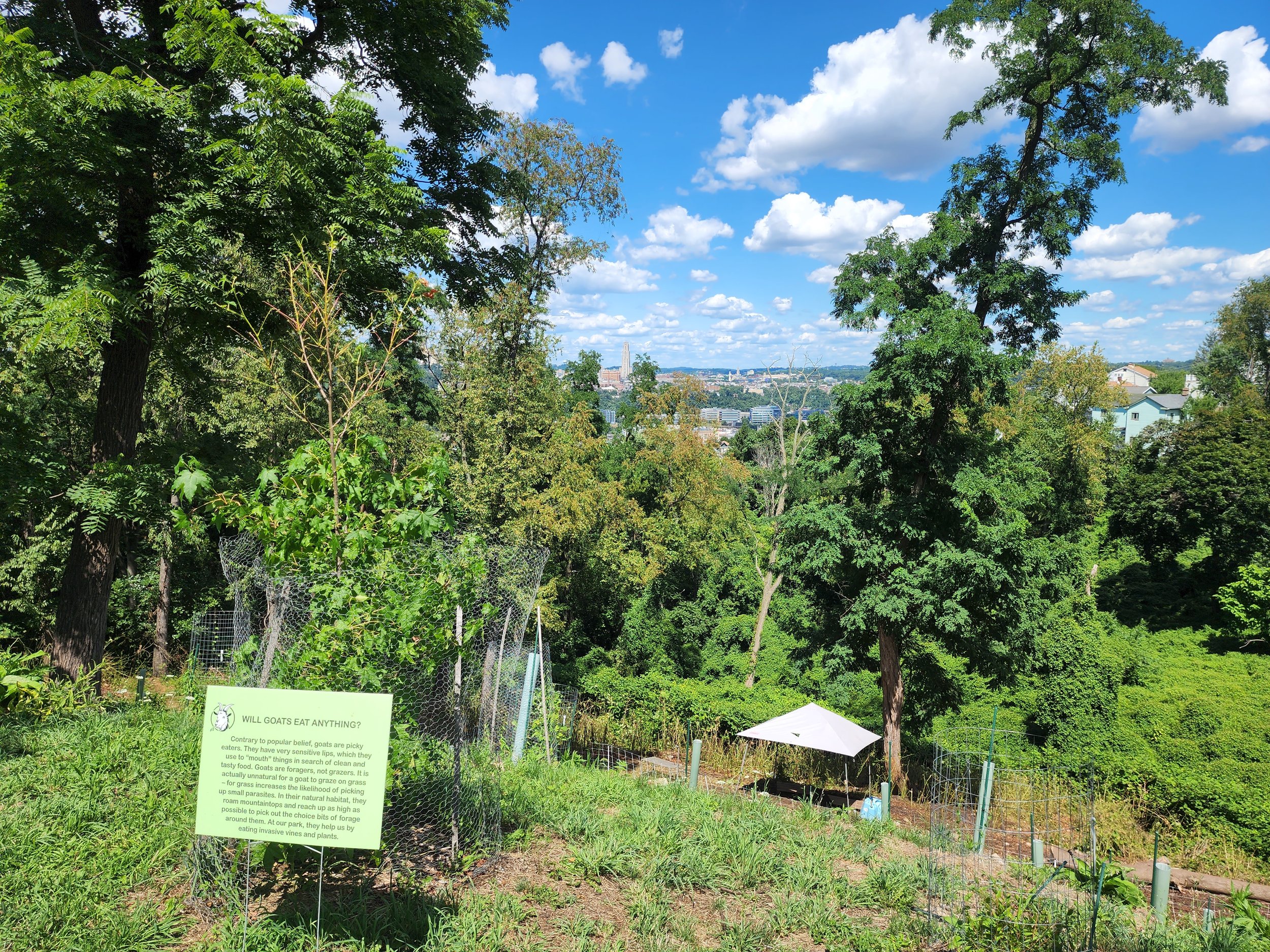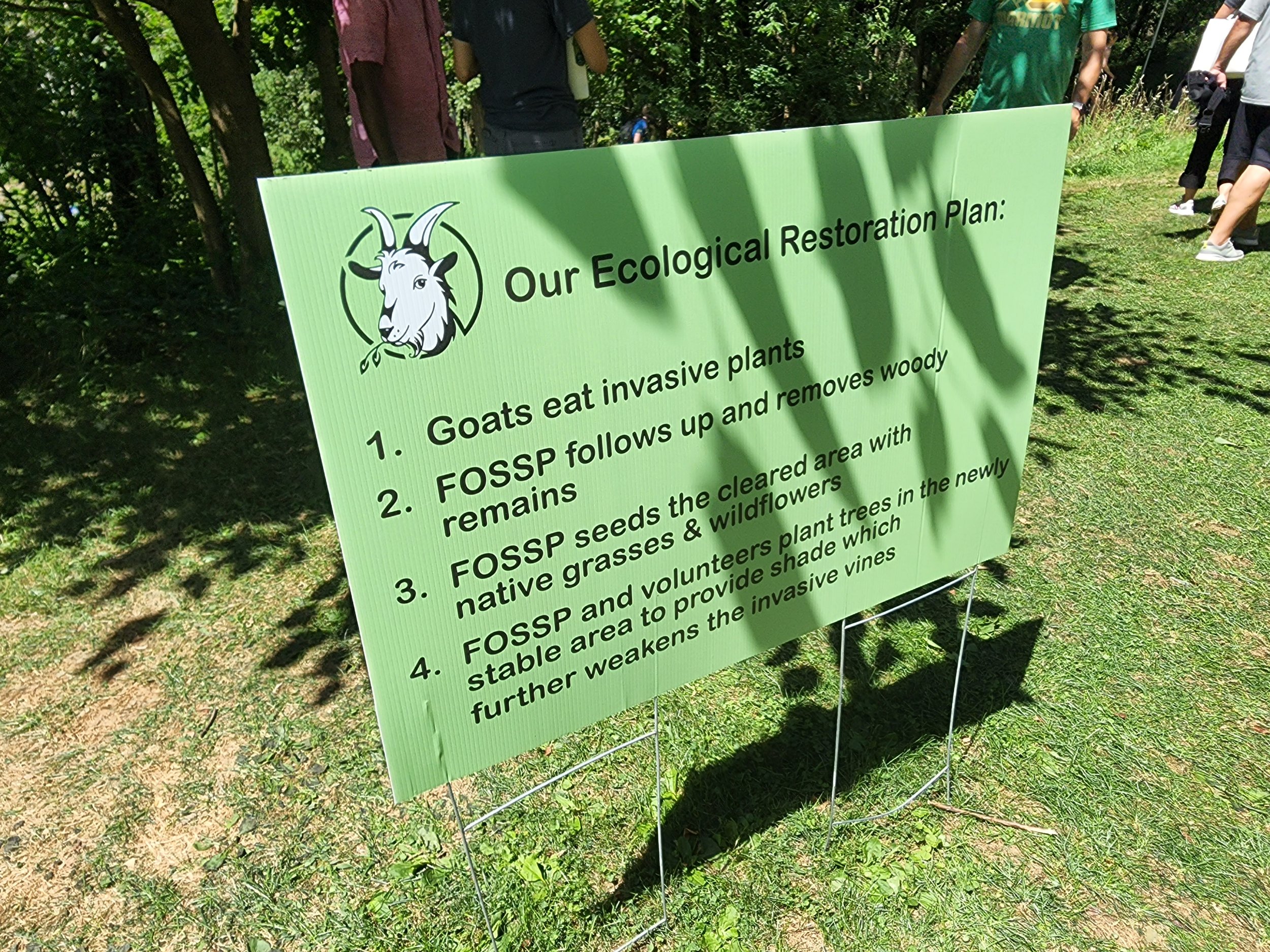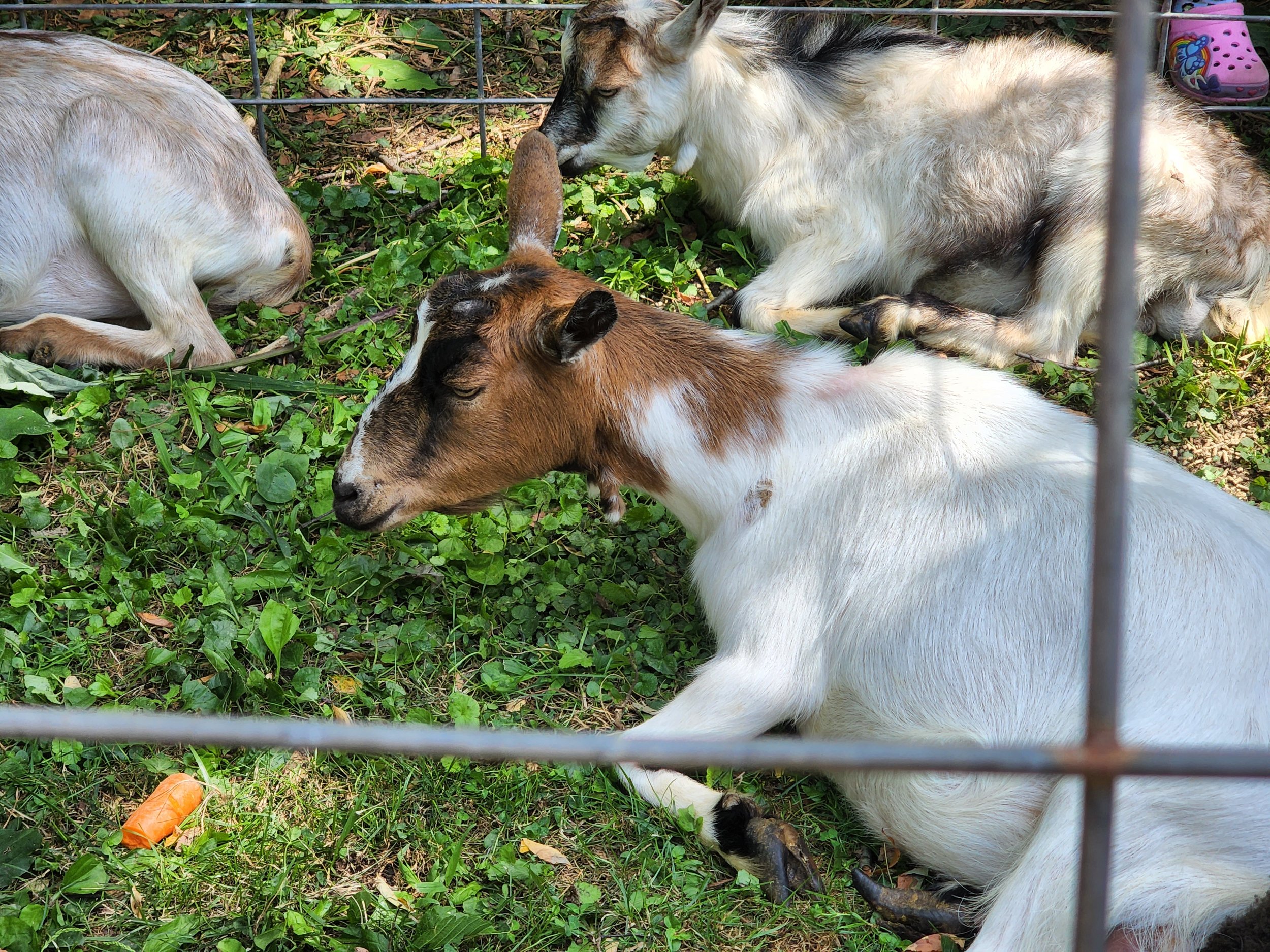Visit The Cool Medium for current posts. Archived posts are below.
2022 cycling montage (w/ music!)
To cap off 2022 here’s a montage of cycling videos I shot this year, mostly from this past Fall. The footage includes rides from Pittsburgh, Los Angeles, New York, and Toronto. Special thanks to Ben McSpadden who wrote and recorded original music for the montage!
2022 in Video Games
I rarely have the time or energy to play video games these days. My waking life seems sufficiently suffused with challenges, tasks, and the pursuit of “achievements” that gaming often feels more like self-induced stress rather than relaxing escapism. But I’m still fascinated by the medium: games can be counted on to innovate technologically (if not always mechanically or narratively); the industry has been plagued by high-profile scandals, increased scrutiny over workplace and labor culture, and a seemingly unending succession of botched game launches; and for my money video games analysis offers some of the most compelling media criticism going these days.
When I am able to indulge in recreational gaming my temperament tends toward experiences that can be enjoyed in bite-sized time increments and are not demanding in terms of attention or technical skill (bonus points if I can play mindlessly while listening to podcasts). Looking back at the games I got around to playing this past year almost all of them were offerings on Xbox Game Pass, especially indie games or smaller experiences that I might’ve overlooked otherwise. I don’t think I tried a single new AAA offering (the fervor around Elden Ring brought me to the precipice of taking that plunge, but I just couldn’t justify the investment; and even the new Pittsburgh expansion hasn’t brought me back to the wasteland of Fallout 76).
Back in January when I had returned from holiday travel and still had a week before the new semester started I decided to check out The Forgotten City. This game had a lot of buzz when it came out in 2021 and I’m glad I finally got around to playing it: it’s an extremely fun game with some fantastic writing (we’ve also been in a bit of a golden age for time loops as a gameplay mechanic; I realize that cycles of player deaths and replaying levels with the benefits of past experience are integral to the genre, but in the past few years it seems like several games have foregrounded time loops as part of the narrative and overall game experience). I never played the original Skyrim mod that this game started off as, but it’s easy to spot that DNA even as this remake fully embarks on doing its own thing. Even though the inevitable breaking of the golden rule could lead to some startling and stressful moments (and desperate, frantic flights to get back to the magic portal before being turned into a statue), it was an engrossing puzzle of an experience that I had a great time completing.
Also in January I tried out Superliminal through game pass. This is a puzzle game that originally released in 2019; I remember being super intrigued by the trailer that showcased the central mechanic of exploiting shifts in perspective to manipulate objects. Once you get the hang of it it’s an alternately infectious and frustrating exercise in out-of-the-box problem solving and experimenting with approaching situations from different perspectives.
I had so much fun with Superliminal that I picked up another puzzler around the same time: The Pedestrian, a side-scrolling platformer where you guide a stick person through a series of 2D puzzles set against 3D backgrounds of urban environments. This was a great low-stakes diversion, though the more challenging puzzles later on kept me from completing the game.
Also in the early part of the year I finally finished my playthrough of the Mass Effect Legendary Edition that came out in 2021. Completing Mass Effect 3 mostly felt perfunctory, as the narrative and emotional beats didn’t hit with the same impact as my first go around. Replaying the second and third games and getting to spend more time in that world and with those characters was a treat, but the real pleasure of this re-release is the original Mass Effect; not only because it benefits the most from the graphical remastering and overhaul of gameplay mechanics, but also because I rushed through my original playthrough. I hadn’t yet learned how to savor the Mass Effect experience and ended up missing out on quite a bit of content (and all romance options). The original also stands out as a singular experience in that trilogy, with a unique synthy space RPG vibe that hasn’t been matched since.
Exo One was another game pass pickup: Basically you pilot a sort of sentient shape-shifting orb across a variety of planetary environments by adjusting your relative gravitational pull to build up momentum for traversing the planet surface or gliding through the air…does that make sense? It’s a streamlined experience with no combat or dialogue, some fantastic visuals of alien landscapes, and a relaxing ambient score. It was a great casual pick-up-and-play over a few months.
In May I picked up Sable, also through game pass. Sable ticks a lot of the boxes on my ideal gaming checklist: an open-world environment that emphasizes sandbox-style freeform exploration and traversal mechanics. Oh, and no pesky combat. Sable is a coming-of-age story where you play from the perspective of a young girl who leaves the familiarity of her small nomadic tribe to embark on a rite of passage journey across the wider world that will determine her future social role. The game has a hand drawn visual aesthetic that I found really appealing: I saw people online comparing the visual style to Studio Ghibli (which I don’t really see) and the French cartoonist Moebius (which I can definitely see), but I thought it seemed most evocative of comic book writer and artist Brandon Graham: the art style reminded me of his King City book, and the overall alien world littered with strange creatures and relics of spacecraft strongly recalled his run on the Prophet revival (particularly the odd issue that he also illustrated). It's also got a very chill soundtrack with original music by Japanese Breakfast. In the latter stages of the game I had some frustrating frame rate issues but it didn’t keep me from finishing.
I played a succession of longer games when I had a bit more time on hands during the summer. In June I finally got around to playing Disco Elysium, a game that’s been on my radar for a long time. Since its original release there’s been all kinds of tantalizing analysis of the game’s political themes and how it incorporates real world history and ideology into its fictional setting, but I did my best to avoid spoilers because I knew I was interested enough to want to experience it for myself. Overall my experience with the game was positive but also a bit underwhelming: I suppose that’s inevitable with how much acclaim the game has received, including it regularly being cited as one of the GOATs. The game does a great job of establishing a melancholy mood and at times it almost felt too bleak, even though it’s infused with a subversive sense of humor throughout. The plight of the protagonist really resonated with me personally: early on I started dreading the nocturnal visitations from the mysterious “her” for the emotionally harrowing introspection they would provoke for both the character and myself. One of my disappointments with the game is how the concluding section and resolution walks back some of these revelations, undercutting the earlier emotional impacts. The sheer amount of content and dialogue options in the game lends itself to replayability, but so far I haven’t felt compelled to return to the world of Revachol.
Also in June I finally got to play Microsoft Flight Simulator through the magic of cloud gaming. I’ve been wanting to try this one out since it was announced: the use of satellite imagery to create a real-time representation of the whole globe is so cool. As much as I enjoy exploring fictional worlds in video games, I’m even more a fan of seeing how real world spaces are recreated in virtual environments. I haven’t progressed in my piloting skills (in fact I still haven’t managed a single successful take off), but I’ve had a lot of fun flying the volocopter around to find my previous apartments and retracing familiar routes through cities.
In July I gave Life is Strange: True Colors a shot. I played the original Life is Strange back in 2015 and liked it just fine (I mostly recall my unsuccessful attempt to talk someone away from a building ledge as a particularly affecting moment in my gaming experience). This latest installment looks great and creates a really nice vibe of a cool little Colorado town. I really enjoyed meeting the residents and just hanging out in the record shop or chilling in my apartment. The bulk of one episode is dedicated to a LARPing activity that plays like a turn-based RPG and offers some fun foreshadowing of the narrative revelations to come; it was a blast to play. A lot of the final episode involves journeying through your character’s memories and most of it works fine, but I thought the final act went completely off the rails with some ludicrous out-of-left-field plot developments, credulity-straining twists on how the magic powers in the game work, and an unsatisfying and melodramatic final showdown that feels out of joint with what came before.
Some other game pass picks from the summer: Road 96 is an RPG adventure game where you play as a series of runaway teenagers seeking to escape a fictional police state by sneaking across a heavily guarded border. I went into this game cold and was really pleasantly surprised. I enjoyed the gameplay loop of episodic encounters as you hitchhike your way to the border and that way that different characters and narrative threads intersect with your journey at different points (there’s a randomized element to what sequences show up in any given playthrough). The game is dealing with some heavy themes: authoritarian governments, propaganda and media collusion, the plight of vulnerable youth, homelessness, immigration, and the refugee experience. I don’t know how successful the game is at addressing these issues but I found it compelling through several playthroughs.
I had a similar but slightly less enthusiastic experience with As Dusk Falls. When I first saw the game showcased I was skeptical about the art style: instead of full animation the visuals are presented as a succession of still images, sort of similar to a motion comic. When I saw the trailer my inclination was that the transitions across images would be nauseating in practice, but it didn’t bother me when playing the final game. This is a narrative game where you play as various characters making dialogue choices and other decisions that lead to various outcomes. It’s a good execution overall with a satisfying ending(s) that also sets up an intriguing hook for a sequel.
I briefly returned to the world of Watch Dogs: Legion to play the final DLC expansion, Bloodline. It was exactly like my experience with both Legion and the original Watch_Dogs: I had a perfectly fun time breezing through the missions until getting to a final boss battle that so completely overwhelms with the amount of crap it throws at you that I give up and abandon the game forever.
Also in July I picked up Kentucky Route Zero: TV Edition. This game originally came out for PC in episodic installments. I played the first couple of acts back in 2014; the final installment only came out in 2020. So this was an opportunity to play the whole package. Similar to my experience with Disco Elysium, I felt a bit underwhelmed in comparison with the amount of acclaim I’d heard about the game. It’s an interesting presentation, and it certainly gets points for being different, but I was feeling bored and impatient toward the end. Supposedly the creative team behind the game didn’t have backgrounds in game development but rather had experience in art installations and theatrical productions. And these influences are very apparent in Kentucky Route Zero (along with museal and academic practices, and a keen interest in obsolete technologies). At times the fact that this is supposed to be a “game” seems beside the point, with mixed results. In my experience the game had some soaring highs (i.e. the musical performance at the Lower Depths bar) and some desultory lows (i.e. the interminable Entertainment interlude).
August featured a delightful surprise in the form of Super VHS: a free PC and virtual reality game that faithfully recreates the Milwaukee studios of Redlettermedia for an easter egg and fanservice-filled celebration of the group’s history and programs. It was a great treat to discover on a slow Saturday morning.
I didn’t have much time for gaming throughout the Fall with my research program in full swing, but I managed to fit in a couple of games in the last month to cap off the year. First was Pentiment, a narrative RPG from Obsidian studios. Pentiment was a real joy to play: it’s got a gorgeous art style that evokes the medieval setting, beautiful period-appropriate music, and rich writing with fleshed out characters and heady themes. The initial setting of a monastic scriptorium bears obvious influence from Umberto Eco’s The Name of the Rose, and there’s fun easter eggs shouting out the novel as well. The plot is primarily driven by investigating a series of murders, and the complex choice-based and dialogue-driven writing that Obsidian is known for through their Fallout work shines both within and outside the investigations. As time progresses forward you are compelled to name potential suspects (or otherwise allow likely innocent people who have already been accused to bear the blame). By the climax of the first investigation I had reasoned out who I thought were the likeliest perpetrators (and my suspicions were eventually confirmed by the game’s final revelations), but I hadn’t discovered the necessary evidence to support my suspicions. These moments are high stakes decision points where life and death hang in the balance, but what Pentiment really gets right is in the low stakes encounters where a speech check succeeds or fails based on your previous choices. Each time I failed a speech check it felt crushing, even what was at stake was only offering some encouragement or advice to one of the townsfolk. There’s a great autumnal and then winter setting to the game which really enhanced the experience of playing over the past few weeks. The visual presentation also has a fantastic media ecology element, where the literacy levels of the characters is represented by different font styles ranging from varieties of handwritten script to block letters of the movable-type printing press.
Finally, the last game I played this year is the recent release High On Life from Squanch Games, the developer founded by Rick and Morty co-creator Justin Roiland. I had been looking forward to this as a day one game pass release. The obnoxious fandom and increasingly uneven writing has somewhat soured my ability to enjoy Rick and Morty in recent years, but I’m still an appreciator of Roiland’s humor (something that nearly all reviews of High On Life have emphasized as the strongest predictor of how you will feel about the game). It’s essentially a first person shooter set inside the world of interdimensional cable where your gun chatters at you with Morty’s voice. A lot of my enjoyment of the game has stemmed from the people involved. I knew from preview footage that Zach Hadel was doing some voices for the game, but I was pleasantly surprised to discover vocal appearances from several comedians I like including J.B. Smoove, Betsy Sodaro, and Andy Daly. There’s also some nice Redlettermedia references with Mike Stoklasa showing up as the voice of a random alien, and the ability to warp in a movie theater where you can listen to the core trio riff on a feature length film. Anyway, it’s been a fun way to decompress in between grading final papers.
Cycling Toronto's Waterfront (w/ video!)
While in Toronto this past October I tried out the city’s bike share system. Even though I’d used the city’s public transit during previous visits to Toronto, on this trip it took me a while to acclimate in terms of which stations I was able to purchase a metro pass for the subway or streetcar with my debit card (NYC’s new Omny “tap and go” system is much easier and more convenient, so take that Canadian infrastructure snobs!).
Overall I found the cycling infrastructure in Toronto to be quite robust, with the city center and major thoroughfares populated with ample dedicated bike lanes (if that’s your jam…I know bike lanes have their drawbacks and aren’t a panacea, but they’re still where I feel most comfortable riding, particularly among traffic in a strange city).
An iconic Toronto bike post, with the “City Cycling Committee” imprint.
I’m not sure what these bike jump markings are for; practicing bunny hops?
The bike share stations were plentiful. Bike Share Toronto uses the same PBSC app as Pittsburgh and many other cities. I did have connectivity issues with my U.S.-based data plan for some reason.
I went riding on a few of the main commercial drags, and due to my transit difficulties used the bike system as a “last mile” option on a couple of occasions. On Queen Street West I came across a local outlet for Giant, the manufacturer of both of my current bikes.
I did a couple of night rides when I couldn’t figure out bus schedules from my phone.
But the most sustained cycling I did was along the Waterfront, on the Martin Goodman Trail. It was gorgeous Fall weather, perfect for a leisurely ride. Here’s some video I shot of the trail ride; it intercuts between my ride out and the return.
West Coast Reflections
Just as this year’s Fall foliage was flourishing throughout Pittsburgh I slipped off to the west coast to meet my parents who were on their own California vacation. It was a bit of a Southland homecoming for all of us; we hadn’t been together in L.A. since our family lived in the area in the 2000s. I was happy for a quick escape to warmer climes before settling in for the long Pittsburgh winter.
It was a relatively rare rainy day in L.A. when I arrived. On approach to LAX the San Bernardino Valley was filled with fog.
Things were already clearing up over the Los Angeles basin.
I know it’s cliche to be an In N Out acolyte (and the fandom has seemed less special with the franchise’s gradual expansion eastward), but I’ll always be a true believer. It’s a tradition to make the location on South Sepulveda my first stop in the city when arriving at LAX.
When my parochial homerism kicks in I wax nostalgic for an earlier era when the “secret menu” was passed along via oral tradition, before every special order and menu hack was widely available on the internet.
The drive up the coast along PCH triggered major sense memory. My parents and I exchanged observations about how the route had changed during our absence: new development, businesses being replaced, more houses on the hillside, etc. But beyond just noting particular details or comparing how the specifics of the scene matched my memories of it, the experience of once again charting a course that I had traveled so many times before evoked a visceral and encompassing sense of “being back in it”; a sort of enveloping phenomenological familiarity where experience and recollection were merged.
At dusk we stopped at Malibu Bluffs park. Despite having lived essentially across the street for more than a decade, my personal experience with the park is scant (my enduring association with the Bluffs is as my local polling place where I voted in my first election as an idealistic 18-year-old).
Driving Malibu Canyon evoked even stronger sense associations than PCH. Familiar routes of transit provide potent affective anchors for personal memory; I suppose because they gradually accrete over long periods of daily routine. Even when we’re accustomed to “zoning out” (or “tuning in” to the car radio) during regular or habitual travel, passing through those liminal spaces between where we came from and where we’re going. Experiences typically relegated to the categories of boredom or banality in our consciousness. Although the twists and turns of Malibu Canyon require active attention, and the spectacularity of the surrounding landscape lends an air of sightseeing to every passage.
My mental mapping or affective cartography of Southern California extends even to the iconography of the local road markers. For instance, the freeway signs for particular exits that I would take to get to a friend’s house bear special emotional resonance. But certain major routes also carry an iconic presence. My late friend Blair kept his bedroom walls decorated with all sorts of ephemera and accoutrements he collected in the course of his carousing, and I was always envious of the 101 freeway entrance sign he had acquired when a neighborhood on-ramp was under construction.
Two weeks prior to this L.A. trip I attended a fundraising event at the home of some recent acquaintances in Pittsburgh. I found myself in an archetypal introvert’s hell: alone at a social engagement surrounded by strangers. I loitered around the backyard, drink in hand, making my best effort to force introductions and sustain small talk.
Naturally that untiring icebreaker “Where are you from?” was a common conversational query. I met people who were from the Pittsburgh area or elsewhere in Appalachia, as well as more distant points of origin such as Ireland, Kenya, and South Africa. But when it was my turn to chime in, I could only manage an overly complicated and exasperating explanation that confounded the good intentions of my interlocutors.
I’ve always found it difficult to explain myself. It’s a quirk of character that I could attribute to a number of possible factors: a natural interiority (or “rich inner life” as Ignatius J. Reilly might say) that tends toward an immobilizing overthinking; a personal predilection for (and greater comfort with) the written word over speech; and an innate and insidious arrogance borne out of the implicit belief that one is too uniquely complicated to easily convey in words (the very real fact that the fullness of our selves and our experience far surpasses the limits of our language is no excuse for narcissism in the negotiation of social niceties).
Lately it’s been even more difficult than usual to account for myself. It really feels like I’ve lost the plot. Any previous sense of self, or purpose, or cohesive guiding narrative has had to be discarded. In the last few years I have seen significant personal endeavors that were supposed to shape the future direction of my life either end abruptly or gradually fade away to reveal their immaterial and ultimately illusory nature. I have felt simultaneously stuck in place and adrift, while always subject to the vagaries of forces beyond my control or comprehension. Discovering the completion of my doctorate to be a proverbial dead end has not helped matters. Now I find myself feeling more untethered and out of place than ever: split between a precarious part-time position of endlessly ambiguous standing, and an in-the-weeds research appointment working on a solitary project that I struggle to articulate even to myself.
I’ve written before about the particular difficulty I have in answering that question, “where are you from?” having moved so often and not experiencing a prolonged duration or strong connection with a single place. Malibu would be a reasonable response to that question, since I lived there from middle school through college, a formative time for me personally and for the development of many enduring relationships. In fact, for a time Malibu was my readymade response to the “hometown” question. But I nearly always self-consciously qualified this claim with almost apologetic assurances that my family were not millionaires or movie stars. And Malibu may be in L.A. county, but claiming Los Angeles as my home city was always out of the question due to fastidious geographic exactitude (which is really a certain snobbishness about zip codes that considers it untruthful when someone claims to be from Chicago when they’re actually from Naperville).
If it’s not evident enough from these self-indulgent ramblings, I’ve been dealing with a lot and have been blessed with an overabundance of time and solitude. So this trip back West not only provided a nice relief from my “rich inner life” but also welcome reassurance about a bedrock of place in my past. The comfort and familiarity found in my old haunting grounds, even after an extended absence, afforded me time and space to process where I’ve been and where I might be going. Naturally the presence of my parents flavored this reflective posture (I’ve sometimes mused that the geographical influences of my upbringing have contributed to my personal constitution via an alchemy of Southern faux folksiness, plain Midwestern earnestness, and a slow-paced California spaciness).
It wasn’t all blasts from the past: there were first-time experiences, too! We had lunch at Paradise Cove which I had never been to before. My Mom found that hard to believe considering how many often she had dined there, so I had to remind her that she had never seen fit to bring me along.
This year I’ve dipped my toes in both the Atlantic and Pacific Oceans. I consider that an accomplishment.
The Dodgers were eliminated from the playoffs while we were in Los Angeles. My Dad pouted a bit but didn’t let it dampen his spirits for the rest of the visit. As someone whose (admittedly short-lived) sports fandom has been entirely limited to the Pittsburgh Pirates, I struggle to sympathize. The trip was tinged with more loss: Just a few days after I returned home the news broke that Mike Davis had died. I had learned of his ill health through some excellent interviews and retrospectives published this summer. Coincidentally, at the beginning of this year I started reading City of Quartz for the third time. It’s one of my favorite books – not just academic books but overall – that I have ever read. I was preparing for the start of my research scholarship and so I returned to that text to be reminded of the sort of scholarship that really moves me, and of the kind of book – multidisciplinary, politically committed, engaging and accessible to broad audiences – that I would hope to write. If not something to aspire to, then an ongoing source of inspiration.
City Scenes: New Orleans, New York, Newark, November
This Fall ended up being travel-heavy for me, with multiple research and work-related trips following in quick succession after a personal excursion to spend time with my parents. As November draws to a close I am recuperating from what feels like a whirlwind of interchangeable liminal spaces and solitary wanderings in strange cities. The physical toll has mostly been limited to fatigue and fouled-up feet, though the final injury was leaving my favorite sunglasses in the Uber that brought me home on the last leg of the journey.
My visit to New Orleans was occasioned by the annual national convention of my ostensible academic discipline. It was the first trip to New Orleans of my adult life, and as with past conferences I was determined to make time to explore the city proper and not have my experience limited to hotel lobbies and ballrooms. But frankly I was still feeling burned out from my solo travel in Toronto two weeks earlier, and colder-than-expected New Orleans weather further dampened my exploratory ambitions (though it was still warmer than Pittsburgh, which was freshly dusted with snow when I departed).
I had planned to at least try out the city’s bike share program and get some cycling in around the French Quarter. But even on that front my ambitions were stymied. The Blue Bikes Nola system uses a proprietary app, and the ride pricing seemed steeper than I’ve seen in other cities. The locking mechanism was also unique: each bike has an affixed cable that users must manually secure to the docking port (or any other desired fixture, I suppose). The first two docking stations I came across were completely empty, and by the time I found an available fleet I wasn’t in the mood to go riding in the rain. It was good to catch up with friends and colleagues (some of whom I hadn’t seen in several years, having not attended an in-person convention since the pre-COVID days), but I ultimately failed in my mission to take advantage of my time in New Orleans beyond the confines of the conference.
I was back home for a single day before embarking for New York. This was a research-related trip that I had been trying to plan for several months. Due to a crowded schedule and emergent personal circumstances I had to book this travel for the week of Thanksgiving, which was less than ideal for a number of reasons. But at least the weather worked out in my favor and it was mostly beautiful late Fall conditions in New York.
I think it was my first time back in the city in five years. After my recent experiences navigating unfamiliar terrain and figuring out public transit in various cities there was something comforting about returning to the subway system. Even though I’ve never been a New Yorker, I’ve often felt a reflexive defensiveness about the outdated infrastructure that gets unfavorably compared to newer transit systems in other cities. “Sure the subway stations are dingy, and the Metrocard reader at the turnstile doesn’t work half of the time, but that’s New York City charm!” Since the last time I was in the city the MTA has upgraded the entry turnstiles to the Omny system whereby you just tap your phone or credit card to enter. I’ve long held on to my Metrocards as souvenirs (and bookmarks) so there’s a nostalgic pang in seeing them be phased out.
I’m pretty sure the CitiBike program had already been implemented when I was last in New York, but the bike share system has a much greater presence now. The bikes and their stations were ubiquitous in each of the boroughs I visited. The increased number of bike lanes was also apparent.
The “Oculus” World Trade Center transit hub had recently opened at the time of my previous visit but this was my first time being inside. The PATH train to New Jersey still requires a physical Metrocard so I was able to scratch my memento itch.
The PATH train was another first-time experience and increased my envy of the affordable and reliable transit in the greater metropolitan area. I disembarked at Newark Penn Station for my first foray on the Jersey side of the Hudson.
I’ll have more to say about my Newark experience in the future, but in the meantime here are some stray street scenes from this first trip.
City Scenes: Jerry's Records in Squirrel Hill
Jerry’s Records has been on my Pittsburgh to-do list ever since I first arrived in the city many years ago. My personal preferences in urban media spaces tend toward film venues, bookstores, and art galleries. Record stores typically don’t make it on my itinerary. When I was still buying CDs I would make it a point to peruse music shop shelves, but that seems like a previous life now and I never got into collecting vinyl. But Jerry’s is a local institution: a longtime independent shop and neighborhood fixture that was renowned for its enormous collection.
As is so often the case with the people and places that are so near-at-hand that they become taken for granted, I kept putting off a visit to Jerry’s until some indeterminate point in the future. Even when I moved to Squirrel Hill, and was living just down the street from Jerry’s, my appointment with the shop was relegated to “someday.” Proximity and familiarity tend to produce indifference, as that which is right in front of us is so easily overlooked. So when my musically-inclined sister and brother-in-law visited this summer it provided a perfect opportunity for finally ascending to record heaven.
The shop is an expansive space that nearly overwhelms with its sprawling assortment and towering stacks. Musical genres and themed sections are helpfully and whimsically designated with colorful decor.
Oh, and did I mention the milk crates? As I’ve reported previously, these polyethylene receptacles have recently become somewhat of a personal obsession. The portable, versatile, and stackable storage containers are put to good use throughout the record shop.
My developing milk crate connoisseurship has inculcated an appreciation for varieties of color and form, but I’m also keen on the different legal warnings against misuse that adorn the objects. The nooks and crannies of Jerry’s offered a veritable milk crate menagerie.
Milk Crates of Canada
Last month I was in Toronto for the first time in six years. For whatever reasons of circumstance, my trips to Canada have always fallen in late October, right around Halloween. Memories of my first visit include the CN Tower being lit in orange and green to resemble a pumpkin, and the red poppy pins of Remembrance Day. My second visit came just before the 2016 U.S. presidential election. I found myself in a residential living room sharing beers with international students from the University of Toronto and having to dutifully downplay the imminent calamity posed by Donald Trump’s candidacy. So once again I was in the Canadian metropolis just ahead of the Halloween holiday, a synchronicity that has taken on greater personal resonance with Toronto becoming one of the most haunted places in my life history.
My previous travels to our neighbor in the north involved driving up from Pittsburgh, so rather than an international excursion those trips felt like visits to upstate New York. And in general my experiences in the commonwealth correlated with the stereotype of Canada as essentially America+: a familiar look and feel but with an elevated element of amity and a sense of superiority supported by performative cultural sensitivity. Like Chicago but with the rough edges replaced by enlightened sensibilities and a much more apparent Global City status.
In my absence I had forgotten about the myriad cultural differences that distinguish Toronto from cities in the states: the bus ads and billboards advertising Canadian media products that you’ve never heard of; the absence of “toilets” or even “WCs” in favor of “washrooms”; the fact that an order for a “regular” at Tim Horton’s won’t result in a black coffee but rather a cup of joe with cream and sugar. But on this most recent trip I was cognizant of a new difference. Over the past few months my brain has been totally rewired to read the urban environment with an eye toward milk crates. I have been obsessively scanning Pittsburgh streetscapes to locate the presence of crates, particularly the distinctive orange crates of the ubiquitous local Turner Dairy Farms. This selective attention was still active in Toronto, where I unconsciously zeroed-in on a milk crate in an alley that was colored a distinctive green rather than the orange to which I have become acclimated.
During the rest of my wanderings I was predisposed to zero in on examples of Toronto’s milk crate ecosystem. Many (but not all) did indeed conform to the characteristics of idiosyncratic Canadian colorization, such as this teal crate on the back of a bike:
Or this handsome blue cycling accessory:
As time went on the sightings seemed to increase exponentially. When I found my way to a Balkans-themed restaurant on my last night in the city, the in-house musicians had their PA speakers resting on towers of overturned milk crates:
And on my walk along Queen St West afterward I passed stacks of milk crates behind bars and restaurants:
I plan to share my extensive visual-survey of Pittsburgh milk crates starting in the new year, but in the meantime I’ll continue chronicling and documenting these essential pieces of urban ephemera wherever I encounter them.
A "Canyon Carving" playlist
A couple of weeks back I was in California for a brief getaway. I hadn’t been in the Los Angeles area (or even on the West coast) in six years, and much has changed in my life during the interval. So this return visit was both a reprieve from my current cloistered existence researching in (mostly) solitude, as well as a welcome reconnection with personal history and past assemblages of self. A sense of homecoming kicked in while riding along Pacific Coast Highway from LAX and was exponentially amplified when I took the wheel to traverse Malibu Canyon later that night. I learned to drive on Malibu Canyon road: it was the first non-residential route I ever piloted solo, and by the time of that inaugural excursion I was intimately familiar with the warp and woof of that winding way.
Anyway, all this to say that I was inspired to put together another playlist drawn from the emotional, physical, and topographical memories stirred up by this recent trip. Some of the selected songs are from my brief but brightly recalled high school heyday of licensed driving, many are from my college career of canyon carving and cruising the coast, and others are anachronistic add-ons chosen for their thematic resonance with driving SoCal canyons. The finalization of this playlist involved the killing of many “canyon carving” darlings (i.e. Should I have included the Emerson, Lake & Palmer or Death From Above 1979 songs that my college roommate would blare during our weekly trips to Pat’s Topanga Grill? Does the playlist accurately reflect my fixation with both Neil Young’s After the Gold Rush and the Manson murders during the year that I lived on Topanga Canyon Blvd?).
Here is the set as a YouTube playlist, and the tracklist is below:
A Canyon Carving playlist:
1. The Crystal Method (ft. Teflon Sega), “Chapter One”
2. Booka Shade, “Night Falls”
3. Simian Mobile Disco, “Clock”
4. Röyksopp, “Eple”
5. Fischerspooner, “A Kick in the Teeth”
6. The Chemical Brothers, “We Are The Night”
7. Kavinsky (ft. Havoc), “Suburbia”
8. Momma, “Speeding 72”
9. Rostam, “4Runner”
10. The Mamas & The Papas, “Twelve Thirty”
11. John Phillips, “Topanga Canyon”
12. Rusty Truck, “Malibu Canyon”
13. Lissie, “Carving Canyons”
14. Lo Moon, “Dream Never Dies”
15. Death Cab for Cutie, “Passenger Seat”
Trail ride to Homestead (w/ video!)
Ever since moving to South Side Flats last year I’ve regularly gone out on the Three Rivers Heritage Trail that snakes along the neighborhood’s edge beside the Monongahela River. My initial forays followed the trail west toward downtown, and I stuck to that stretch throughout the past year. This summer, however, I changed up my routine and started heading eastward on the trail toward Homestead. Recently I made a long-planned bike trip taking the trail all the way down to Homestead’s Waterfront.
It was the first week of October and the trail was dusted with fallen leaves; most of the trees were still green but a few had begun to change colors, portending the autumnal transition that has taken hold since.
The westward stretch of the trail features sporadic historical markers providing information about the area’s industrial past and certain significant events.
The old pumping station is fenced off yet bears the graffitied indicators of urban exploration.
Looking across the opposite side of the trail, where East Carson Street meets Becks Run Road, you can see the Pennsylvania American Water facility that replaced the pumping station (across the street from Page’s Dairy Mart, a beloved local ice cream shop).
The river trail briefly passes through the borough of Baldwin, with signs demarcating the approximate boundaries.
An informational placard in the Baldwin Borough portion of the trail tells the story of bicyclist and photographer Frank Lenz, “Pittsburgh’s Lost Cyclist” who disappeared in 1894 while attempting to cycle around the globe.
Not much further along the trail you’ll encounter the Hays Bald Eagle Nest Viewpoint, complete with seating to accommodate birdwatchers while they look for eagles. I’ve yet to spot one myself.
There’s actually a few eagle-related fixtures in this area of the trail, such as these markers made as part of an Eagle Scout project by Pittsburgh’s Troop 109.
As you near Homestead you can catch a glimpse of the Glenwood Bridge. With its distinctive blue coloring and subtle cantilever profile, I think it’s one of Pittsburgh’s underrated river-spanning bridges.
The path to the Waterfront takes you past Sandcastle Water Park. They’re closed for the season so the park’s colorful waterslides and parking lot booths silently await next summer.
Finally I stopped to rest my bike against one of the Homestead Smokestacks.
Here’s an uncut video of the entire ride:
City Scenes: Cycling L.A.'s new 6th Street Bridge (w/ video)
While I missed out on all the excitement surrounding the opening of L.A.’s new Sixth Street Viaduct back in July, I finally got to see the bridge in person during a visit to California this October. I also got to try out the city’s bike share system.
There is a Metro Bike station near the western end of the bridge at the intersection of Willow and Mateo streets. It was a typically bright and clear Monday morning, and traffic was light in this corner of the Arts District.
Traffic was light on the bridge, as well. It was almost hard to imagine the bridge crowded with revelers or subjected to “street takeovers” as it had been in the weeks following its opening. The structure’s broad, bright surface seemed to shimmer in the sunlight, and in a state of quiet that was only occasionally interrupted by passing vehicles.
Much of the discourse around the bridge’s opening this summer focused on the unruly appropriations of this new urban space and on how to maintain an uninterrupted traffic flow. I noted that the speed humps which had been touted as a quick-fix solution for stopping road racing on the bridge have not been installed.
Another strand of discourse placed blame for the unanticipated disruption not on the “unruly” bridge users but rather on the designers and planners whose ingrained transit biases and myopic mobility visions laid the foundation for an emergent repurposing of the infrastructure that was ultimately inevitable rather than unexpected. The L.A. Times editorial board barely stopped short of invoking the Lefebvrian “right to the city” in calling for a vision of public space oriented around people rather than vehicles. My own urbanist inclinations are entirely in agreement with this rhetoric. Having now seen the bridge in person, however, I have to say that I quite like the new Sixth Street Viaduct. The bridge may not represent anything revolutionary, nor does it offer a bold new vision for urban space, but for what it is I found it to be accessible enough for pedestrians and cyclists, while offering expansive views of the river and downtown skyline. Even the bike lanes, which the Times editorial derided for being insufficiently “protected” from traffic, offer a better sense of separation from the road relative to what I’ve seen in U.S. cities.
On the bridge’s aesthetic features my feelings are more ambivalent. The concrete surface conveys the sense that the bridge is merely an extension of L.A.’s sprawling freeway network, and the canted arches smack of the sort of cosmopolitan “starchitecture” that renders all spaces in a homogenizing image of sameness. I am also preferential to the original bridge design and was in favor of the early proposals that the replacement viaduct be designed as a replica of the former structure (the preservation of historic and landmark architecture is one of the issues that brings out my conservative side). Regardless, I enjoyed my brief time on the bridge. I also unconsciously recreated my GTA avatar’s 6th St Bridge photo from back in August:
Here’s some video I shot during my bridge crossings:
City Scenes: Pitt Homecoming fireworks redux
One of my favorite features of my South Side apartment is the view of Pitt’s Cathedral of Learning across the river in Oakland. When the time came for Pitt’s annual Homecoming fireworks display last Fall I was excited to check out the proceedings from the comfort of my living room. This time around I wanted to see how I would fare photographing the pyrotechnics with a proper camera instead of my phone. So I set a tripod up at the window and waited for the show to start.
This year’s show was a little different because in addition to the usual fireworks going off from the Cathedral and nearby Schenley Park, there were also fireworks going off toward downtown (I’m not sure what vantage point these would be visible from.).
Anyway, these weren’t the photographic marvels I had hoped for, but it was something a little different for another time around the block.
Closing the 2022 Pirates season
This baseball season really tested my Pirates fandom. For six years I’ve followed the team (a relative baseball baby, I admit), never letting a losing record dampen my enthusiasm. Commiserating about ownership and the team’s performance felt like a Pittsburgh rite of passage, and a stalwart standby to have in the conversational toolkit. This season seemed especially rough, however, as if collective patience had been tested past the point of credulity.
In August an 18 year old fan got a photo op with owner Bob Nutting, revealing a shirt with the directive to “sell the team.” Later that month the Red Sox broadcast referred to the Pirates’ lineup as a “hodgepodge of nothingness,” and “pathetic.” Shortly after the Pittsburgh Post-Gazette published an editorial with the pointed title, “Are you proud, Bob Nutting?”
I started this season with an appreciation of new features at PNC Park, and I still appreciate these additions. But my trips to the ballpark this year also revealed things that had been lost from the stadium (i.e. the out-of-town scoreboard, sensible bag policies, and gluten free food options at the concessions). Last year I was so excited for October games, and I attended all of the games that month. This year I had run out of interest in heading back to the ballpark by the end of August. It was only a gift from my former roommate and friend-of-the-blog that got me back for a final outing.
He had got me a ticket for the October 4th game, the Pirates’ penultimate game of the season. Since this series was against the Cardinals I thought that at the very least I might see Albert Pujols make history by surpassing Babe Ruth in all-time RBIs, but he ended up passing that milestone the night before. So I admittedly didn’t have much enthusiasm for the game, a sentiment that was evidently shared by the “We hate Bob Nutting” stickers that I passed on my way to the stadium.
I was feeling more charitable by the time I got to PNC. There’s just something about Fall foliage around the ballpark that gets to me.
Once I was at my seat the transformation was total. I was directly behind the Pirates dugout, with a view of the stadium that I’ve never had at PNC Park.
Sitting behind the dugout my cynicism melted away immediately. I was directly across one set of the dugout steps, so players were traveling to and from the field right in front of me. Being so close, I was just feeling starstruck in the presence of my favorite players rather than griping about team standings. Gone was any sense of this game as a perfunctory penultimate outing with zero season stakes; I was just caught up in the drama of the game that was being played, and that was all that mattered.
It actually took me a while to figure out how to get to my section, and I’m glad that I got some crabfries before finding my seat because once I was stationed I didn’t move out of spot for the entirety of the 10-inning nearly four hour game (it was also my first time having crabfries, a PNC Park concession staple that I have long been curious about).
Even though Pujols wasn’t going to be setting any new records it was still cool to get to see him at the end of his historic season (and I guess this game was also his final regular season at-bat).
The couple sitting to my right were clearly season ticket holders who knew the usher and other folks in the section. Two seats to my left was a former coach for the Pirates’ AA affiliate Altoona Curve, so he knew many of the players and was interacting with them from the dugout throughout the game. Sitting directly next to me was a woman from Osaka. She was taking a vacation after leaving her previous job of 25 years and before starting her new job. Her whole vacation was traveling to Pittsburgh and attending these three games against the Cardinals. I asked if she was a lifelong baseball fan and she told me that she didn’t get into baseball until she was 30, which is something that we have in common. She wasn’t a Pirates fan, and in fact doesn’t follow any MLB team in particular, but she said that Pittsburgh seemed like a particularly fascinating city to visit.
I may have missed Pujols’ RBI milestone by one game, but it was still a historic night: it was the Pirates’ 100th loss of the season, which makes this their first consecutive 100 loss season since the 1950s. Yet this didn’t matter to me at the time. For the duration of the game I was only concerned with what was happening on the field. After all the frustration of this season I’m glad I had one more night out at the ballpark, and especially one that helped me get lost in the love of the game.
A cabin trip prelude in KC
My summer got off to a strong start this year with my only proper vacation travel of the season. For the past several years my sister has invited me out to her in-laws’ Colorado cabin, and I was finally able to accept the invitation this past May. Before making the trek out to the Centennial State I went to Kansas City to spend a couple of days with my sister and her husband (on their respective birthdays, no less).
For a fun outing and activity on her birthday my sister elected for a driving tour focused on the history of racial and spatial segregation in Kansas City (finding a nice connection to my own interests). To facilitate this tour she used a custom GPS-enabled audio program from an app called VoiceMap. This program, entitled “Dividing Lines: A History of Segregation in Kansas City”, was produced by the Johnson County Library as part of its “Race Project KC.” The roughly 90-minute audio tour includes explanatory host narration, audio from interviews with KC residents and historians, and a backing soundtrack sourced from local musicians. The audio segments are linked to GPS coordinates and interspersed with plain-spoken navigational instructions to help facilitate the self-directed audio tour.
It was an awesome, well-produced audio tour; I learned a lot about KC’s development history while also getting to see a lot of the city. One of the stops along the route was a house where Walt Disney’s family lived. I usually imagine Disney’s trajectory as moving from Marceline, Missouri directly to Los Angeles, forgetting that Kansas City came in between.
The route for the audio tour took us along the Paseo (and we did pause the app to listen to Tech N9ne’s eponymous anthem while driving down the boulevard). I asked my sister to pull over where the Paseo intersects Linwood Boulevard because I spotted a building that looked like a Masonic lodge (I am an aficionado of Masonic architecture). It was indeed a Scottish Rite temple so I walked around and took pictures.
Another point of interest along the Paseo is the 18th and Vine Historic District. I’ve been here on previous KC trips to visit the Negro Leagues Baseball Museum.
What I hadn’t realized is that just one street over from the Museum are installations commemorating the former location of Municipal Stadium, a ballpark that hosted an array of Kansas City teams in its history including the Monarchs, Royals, Athletics, and Chiefs.
After a little more Kansas City sightseeing it was time to continue onward to the mountains for the next part of trip.
Mediated Memories & Nostalgic Obsolescence
I spent much of the spring 2020 early pandemic period like many other people, holed up at home binging streaming content. It’s an interval of the past two years that I recall fondly: having nowhere to go and nothing better to do than consume entire seasons or series of television. During that initial period of displacement in which I spent several months living out of a single, hastily-packed weekender bag, I also got to share a lot of valuable viewing time with my family. But once we had exhausted all episodes of Tiger King, and the novelty of lockdown life evolved into an increasingly despondent drudgery, I began exploring the various family media stashed around the house.
We started in on the family photo albums and school yearbooks, scrutinizing snapshots and swapping infrequently recalled stories. It was a refreshing deep dive into forgotten memories; encounters with anecdotes that at one time perhaps seemed so integral to one’s personal mythology as anchor points for a cohesive sense of self. It also signaled the beginning of a pandemic-prompted turn toward introspection and reflection, one that I would continue throughout the following year.
From the photo albums I moved on to boxes of home movies on VHS that I found alongside a dusty VCR in storage. Miraculously the player still functioned and we were able to screen these family films that hadn’t been seen in decades: progressive construction updates on the building of a house; a family outing to tour the fall foliage in central Illinois; my father and grandfather retracing steps in Austria. I was also able to reconnect with my personal media library that’s been kept in my parents’ storage for the past twenty years. First there was my collection of commercial VHS tapes, mostly zombie movies procured during a period in the early days of DVD when these cult horror films were out of print on home video or otherwise in distributional limbo. But the real gold was my collection of mini-VHS tapes representing years of recordings from elementary school through high school when my camcorder was my constant companion.
Reviewing the camcorder tapes required more effort since you need a cassette converter to play the mini-VHS format in a VCR. I was thankfully able to extract a tape that had been loaded into my converter for the past 15+ years, but after that delicate procedure the device gave up the ghost and I had to order a replacement. I also came across my old camcorder itself and saw that there was a tape inside. After several unsuccessful attempts to get the camera to power up I resorted to surgery, prying the camera apart to free the tape. I was able to remove the cassette and respool the tape into playable condition; it turned out to be a tape my youngest sister had recorded sometime after I’d left the camera at home for college.
When we first began going through the home movies in Spring 2020 my family had discussed the prospect of digitizing the tapes or transferring them to DVD. I even researched local video houses and estimated the cost of digitizing our entire VHS collection. But it didn’t go any further than that: based on the effort and cost that would be involved I put the digitization project on the back burner. That winter I learned that an old friend of mine was very seriously ill. We hadn’t seen each other in ten years, and had only been intermittently in contact during that time, but he was one of my dearest friends so I quickly reached out. Six months later when I learned that he was dying and had ultimately passed away I was struck by a sense of paralysis that stretched back retroactively through the preceding months, wishing that I had done more or been able to offer more of a gesture for my friend. Immediately wishing I had been able to share the recently rediscovered camcorder tapes of our high school hijinks as a distraction while he dealt with his health issues, I took that digitization project off of the back burner and set about figuring out the process.
It turns out that I didn’t need to contract the services of a professional video house, or pay expensive fees for digital transfer. All that I needed was some software and a set of USB-to-RCA adapter cables. Oh, and a working VCR: the unit I had taken out of storage the previous spring was no longer functioning. My grandfather generously shipped a VCR that he had lying around the house but it wasn’t working either. However after one trip to the nearest Goodwill store I came home with what turned out to be a fully functioning DVD-VCR combo player.
I wasn’t able to put together a media care package in time for my ailing friend so I started curating a collection to send to the other members of our friend group. This involved digitizing the video recordings I had as well as salvaging audio: my storage boxes included CD booklets filled with burned CDs of favorite albums and mixtapes, and also recordings of Nite Owl, a show on my college radio station that my friends frequently co-hosted with me.
As my friends and I respectively sorted through mementos and ephemera in our grief, there were welcome surprises and reminders in the wake of our loss. For instance, my friend sent me this photograph he had discovered showing me at the radio studio boards getting ready for a Nite Owl broadcast:
The first half of the 2021 summer, as I wrapped up my strange pandemic year and prepared to return to Pittsburgh, it was a flurry of reminiscence and reflection. Not only on the previous 18 months - trying to process the twists and turns of that unprecedented time and what it meant to me - but further back as well, a deeper inventory of personal history facilitated by the mediated memories that I had rediscovered in that place. Those days also had the frantic pace of a futile race against time: hurriedly making preparations in advance of my upcoming move while simultaneously wrapping up that tangential sojourn with some sense of closure. And all the while desperately trying to stay one step ahead of obsolescence, technological or otherwise.
As I sorted out my belongings for transit I made one more push into the curios I had in storage to mine as much nostalgic material as possible. I went through all manner of outdated recording media from CDs to videotapes; I even unearthed a PC that hadn’t been activated ever since the campus network had quarantined it for computer viruses 18 years earlier. After hooking it up to a monitor, mouse, and keyboard I was faced with a Windows XP login screen and was even able to successfully determine the password following nearly an hour of cross-referencing the cryptic hint with my oldest available emails. I don’t know what it’s all worth aside from a cache of dusty data saved to a brand new external hard drive. But at least the effort kept me occupied, and recollecting the memories I left for myself all those years ago seemed like a sufficient reward.
Pedal PGH 2022 (w/ video!)
Back on the last Sunday in August I took part in Pedal PGH for the first time. Although this event had never been on my radar, it's been held every year since 1994. Having now participated, I recognize the color-coordinated route markers placed throughout the city to guide cyclists from previous summers; I always assumed they were left over from the Pittsburgh Marathon or other running event. This year there were four routes to choose from in mileages of 10, 25, 40, and 60 miles. In an honest assessment of my fitness level I would’ve opted for the lowest mileage option, but the 10 mile route only covered a loop around the South Side river trail, and I’m on those paths all the time as it is. So I opted for the 25 mile City Tour route.
Suggested start times were staggered based on your intended route length, but everyone began from the same place beneath the South Side end of the Birmingham Bridge. It was fun checking out the variety of bikes and cycling gear represented around the starting lane, particularly the more fanciful conveyances.
Streets along the routes were open for business as usual, so cyclists were sharing the road with other traffic, but with the energy of a massive group ride that was an entirely new experience for me. This year’s Pedal PGH coincided with the annual national meetup of Black Girls Do Bike, an advocacy organization committed to growing a cycling community for girls and women of color. I saw numerous riders with BGDB gear throughout my route and they were among the most active in calling out stoppages or traffic at intersections, especially through downtown. There were two rest stops along the 25 mile route with the first being in the Allegheny Commons Park on the North Side.
The inclines began to overcome me climbing out of the Strip District and crossing the 28th Street Bridge. Polish Hill really wore me out although it was cool traversing new streets and seeing neighborhood landmarks like the Immaculate Heart of Mary Church up close for the first time. There were also some great views along that stretch.
The next rest stop was in Highland Park, which was timely for a number of reasons. Firstly, I was feeling fatigued and famished at this point and was happy to find a somewhat shady spot to wolf down the lunch that was provided. Secondly, during the ride into Highland Park I started having issues with my bike that made me nervous.
Upon mounting my bike and attempting to resume the ride my rear wheel fishtailed dramatically, confirming my fears that I had a flat tire. Thankfully the rest stop also included a bike service station and I was able to get the flat fixed.
From there it was back toward the South Side passing through Bloomfield, Friendship, Squirrel Hill, Oakland, and Greenfield. The ride ended where it began beneath the Birmingham Bridge.
I gotta admit I was pretty wiped out by this ride and it took my body a few days to recover.
Here’s a compilation of footage I shot during my ride. I tried to record the whole trip but my phone was too low on battery after a couple of hours, so this video only covers about two thirds of the route. It’s a shame because it misses out on some of my favorite parts of the ride, particularly going through Schenley Park into Oakland, and riding Swinburne Street down into Greenfield. Also, apologies to the North Side neighborhoods that I don’t know well enough to properly shout out in the video…Manchester? Chateau? California Kirkbride?
South Side streets, micromobility misfires, e-bike discourse
For the entirety of the past year East Carson Street – the central corridor through Pittsburgh’s South Side – has been undergoing a slow and stymying overhaul. The construction project has involved street closures, blocked sidewalks, and haphazardly reconfigured intersection crossings (I previously chronicled my own frustrations with mobility in the neighborhood). Supposedly the project is finally drawing to a close, although a basic visual survey of the streetscape suggests that a significant amount of work remains to be done. Street paving operations, one of the final stages of the project, were recently shifted from overnight hours to the daytime due to harassment of workers. Prior to the re-paving the street was jackhammered and stripped down to the underlying stone (I’m actually not sure if these are considered cobblestones or setts).
I read an unsubstantiated claim on the Pittsburgh subreddit saying that the Carson Street project was being overseen by PennDOT instead of the city Department of Public Works as a cost-saving measure, and as such the overall approach and materials used are typical of highway maintenance rather than street repair. I have no idea if this is accurate but it might explain why the current state of Carson Street is such a motley mix of materials and surfaces. Frankly, the redesigned streetcorners and placement of new utility posts along the sidewalk suggest an ignorance of fundamental pedestrian use and mobility.
Meanwhile, Miami-based micromobility startup Bolt Mobility abruptly ceased services in a number of U.S. cities this summer. A Tech Crunch article considered the broader implications for a depopulating micromobility market.
In a Time editorial published last month, Paris Marx (author of the recently published Road to Nowhere: What Silicon Valley Gets Wrong about the Future of Transportation) scrutinizes the myopic mobility visions of Elon Musk:
“Elon Musk has wielded a virtual monopoly on how we think about the future, but will his visions really deliver better lives for most people in our society? For all the tech industry’s talk of ‘disruption,’ keeping us all trapped in cars for decades into the future by equipping them with batteries or upgraded computers doesn’t feel like much of a revolution.”
Over the years this blog has referenced writings by Ian Bogost, typically on issues relating to technology or video games. Bogost recently penned a new piece on technology, this time tackling the e-bike. People have dogpiled on the article on Twitter already so I don’t want to recapitulate those responses here, but without even getting into the potential merits of the essay’s sentiments it’s easily the lamest writing I’ve personally seen from Bogost.
“Perhaps my e-bike ambivalence comes in part from the bike’s strange social status. An e-bike isn’t cheap—the least expensive ones are about $1,000, and they go up to $5,000 or more. But the symbolic value one receives in exchange is minimal. Spending five large on a conventional bike would get you a status symbol—you’d come off as a cyclist for sure. For that matter, spending that dough on a Vespa would infuse you with an Aperol-tinged Italianate cool. You’d want to be seen arriving on your moped. But I don’t want anybody seeing me on my e-bike. It’s just kind of embarrassing.”
Anyway, Vice writer Aaron Gordon penned a response piece arguing that America does indeed have an “e-bike problem,” but it’s not one of those identified by Bogost:
“E-bikes do have a big problem in the U.S., one that I have been increasingly concerned about as someone who very much advocates for e-bikes and wants to see them take off in this country. It is related to Bogost’s point that e-bikes don’t quite fit with any American identity, but in a much more—literally—concrete way. E-bikes don’t belong anywhere in particular on American infrastructure, which makes them both more frustrating, more dangerous, and more annoying than they otherwise could be. And it’s unnecessarily generating friction between traditional cyclists and e-bikers despite their obvious shared interests in repurposing street space from automobiles.”
Writing at Streets Blog USA, Kea Wilson focuses in on Bogost’s fixation with the “symbolic value” of the e-bike in comparison to other modes of transportation:
“Two-wheeled transportation has been cast not just as the purview of the “twee,” the “jerks,” or the “pathetic losers,” but, variously, of the middle-aged man in Lycra and the snot-nosed kid, the gentrifying hipster and the lazy poor person, the scofflaw stoplight runner and the insufferable nerd who’s holding up traffic and deserves to be mowed down by motorists with important places to be. And to be fair, even among bike advocates, cycling can too easily be stereotyped as a silver-bullet solution to some of society’s most enduring problems; it’s what Dr. Melody Hoffman calls a “rolling signifier” that can easily morph into or a scapegoat, or a superhero, or something else entirely, depending on who’s looking and what their agenda is.”
Incidentally, I had my first e-bike experience just last week, riding a POGOH electric-assist cycle back home along the river trail. It was fun and even thrilling, but it did feel uncomfortably overpowered for the bike path. However I’m eager to try one out on the uphill commute into Oakland.
A "Late Summer Days" playlist
Today is Labor Day, a holiday that commemorates workers’ movements and serves as a reference point for when it is fashionable to wear white clothing. The date is also considered the unofficial end of summer. This summer flew by. Aside from a couple of quick excursions I stayed local, having one of my most Pittsburgh summers ever. Ballgames, lots of trail time, and more local events in a season than I’d done in entire years in the city. I also got my CitiParks pool tag for the first time ever (although a planned pool-a-palooza will have to wait until next summer). This playlist features a selection of summer-centric songs, some of my earworms from this summer, and some songs that are just good for summer vibes. Here is the set as a YouTube playlist, and the tracklist is below:
1. The Fiery Furnaces, “Here Comes the Summer”
2. Yacht, “That Summer Song”
3. Sylvan Esso, “Ferris Wheel”
4. Ratatat, “Sunblocks”
5. Pinback, “Loro”
6. Neon Indian, “Should Have Taken Acid With You”
7. Animal Collective, “Summertime Clothes”
8. Nine, “Hit Em Like Dis”
9. Booker T. & The M.G.’s, “Time is Tight”
10. Matt Pond PA, “Summer is Coming”
11. Orville Peck, “Summertime”
12. The Flaming Lips, “It’s Summertime”
13. American Football, “The Summer Ends”
14. Agnes Obel, “September Song”
Goat Fest 2022
For the past five years an annual Pittsburgh event has celebrated a cutting-edge technology of ecological restoration: goats. Since 2017 an organization called Allegheny GoatScape has utilized goats – “nature’s lawn mowers” – to reduce invasive vegetation and clear away difficult brush in the city’s parks, vacant lots, and other public spaces. This work is honored each summer at Goat Fest, a community event organized by the volunteer group Friends of South Side Park.
This was not only my first Goat Fest but also my first time visiting South Side Park. The park is located just a ways up the hill from me in the neighborhood of Arlington. Arlington is above South Side Flats and at the edge of South Side Slopes.
When I arrived mid-afternoon on Saturday the area was buzzing with activity, with visitors and vendors crowded across Arlington Baseball Field.
I was totally blown away by South Side Park itself. I had no idea that there was such a large and lush park so close to where I live.
Goat Fest was held on the same day as this summer’s final Open Streets event, and the park offered a perspective where I could look out over the East End neighborhoods that I had rode through earlier that morning.
It was also possible to catch glimpses of iconic downtown skyscrapers through the trees.
The goat’s efforts are concentrated in an area of the park called Jurassic Valley. Placards placed along the footpaths provided information on the goat’s work and the park itself.
Of course the stars of the show for most visitors were the goats themselves. A penned area near the park entrance allowed guests to view and pet the animals.
Further into the park visitors could encounter the working goats engaged in their labor of consuming unwanted vegetation.
L.A's 6th Street Bridge, startup shutdowns, bumpy roads
Last month the city of Los Angeles celebrated the opening of the new 6th Street Viaduct bridge. The new structure replaces the original 6th Street bridge, an iconic landmark that spanned the L.A. river, connected downtown to Boyle Heights, and appeared in numerous films and other media. The original bridge was constructed in 1932 and demolished in 2016 due to structural problems.
The fanfare around the viaduct’s opening was quickly replaced by media coverage of illegal activity and street takeovers bringing traffic across the span to a standstill. In addition to reported road races, spinouts, and wheelie exhibitions, the new bridge was soon employed for a variety of unintended uses:
Video on social media from last weekend showed drivers spinning their wheels and performing other antics on the bridge, leaving the pavement scarred. Some people even crawled onto the ribbon-like arches that line the bridge to get elevated views of the action. Other isolated incidents have included a man getting a haircut in the middle of the bridge last Wednesday and another shadow boxing while wearing a red cape.
Reading about the commotion – and the flurry of responses – from afar, I was tempted to catch a flight to L.A. for a first-person perspective of the proceedings before the proposed preventive measures could be implemented (I had to settle for visiting the virtual ghost of the original bridge in Grand Theft Auto V, see photo above). The new 6th Street Viaduct, the disputes over its utilization, and the discourse around the controversy represent a confluence of urban communication issues. In the first month of its opening, the bridge has supported a communicative convergence of contrasting visions of city form and function.
On one hand is the bridge as symbol, as a medium for communicating urban identity and values. In response to the “unruly” behavior overtaking the new viaduct Los Angeles city council member Kevin de León highlighted the bridge’s symbolic function as an iconic landmark communicating an elite cosmopolitan status:
He predicted the bridge would become as famous as Griffith Park Observatory and Venice Beach. “We do have a new star in town,” he said. “It’s something all Angelenos deserve. This would be a symbolic icon for not just the region ... but for the entire world.”
This perspective attests to the role of iconic architecture (or “starchitecture”) for communicating urban distinction and “world city” status, as well as acting as lightning rods for attracting additional investment. But other Angelenos see the new bridge as symbolic of the attendant processes of gentrification. As stated in one community organizer’s account:
I begin to explain once again that the new Sixth Street Bridge Project is often hated for the wrong reasons. Though mostly because many people are quite convinced that this new bridge is a symbol of gentrification and displacement of a culture-rich community. And its hard to see how not to get that impression, given the characteristics of this project and the inequity in the end results.
From this perspective the viaduct is not merely a route for moving traffic between downtown and Boyle Heights but is a corridor for carrying capital into new extractive territories.
Beyond the bridge’s symbolic status as communication medium, the material form of the viaduct also functions as an infrastructure, not only for traversal but for expression. The aforementioned councilmember de León has targeted graffiti on the new bridge, asking the city council to allocate additional funds for graffiti removal.
The proposal to clean up graffiti passed 3-1 after De Leon and San Fernando Valley area City Councilman John Lee got into a debate, with Lee saying that spending that kind of money downtown takes funding away from other districts in Los Angeles that are trying to clean up their own local graffiti.
De León’s comments advocating for residents to take “collective responsibility as stewards of the bridge” moved beyond graffiti to the range of behaviors by which individuals were using the bridge to get their fifteen minutes of fame:
De León urged people to “step up and do everything within our power to make sure that we don’t allow a small group of individuals that are looking for their virtual fame to go viral on Instagram, TikTok or Facebook or Twitter — whatever it may be, for them to hijack the bridge that ultimately, at the end of the day, is the people’s bridge. This bridge belongs to everybody.”
There’s a lot to unpack here. De León’s emphasis on collective responsibility and assertion that “the bridge belongs to everybody” are ripe for analysis, but in the particular context of graffiti I can’t help but think of Richard Sennett. Sennett’s prolific career of urbanist writings began with the influential articulation of the “uses of disorder” for city life. In later writings Sennett addressed graffiti with a somewhat ambivalent attitude (to my reading anyway) that viewed it as a form of private address indifferent to the general urban public, and expression of an “aggressive” relation to the environment.
But De León also references the role of mediation in drawing crowds to the bridge, particularly the influence of social media. In our mediated era the opening of a new urban landmark offers an occasion not only for individual exploration but for seizing the novel infrastructure as a platform for creating “content” to add to the endlessly circulating stream of online images. The ever proliferating ways in which urban environments are mediated represent a wrinkle in Sennett’s theories of disorder and individual expression, as social media participation has incentivized new ways of relating to the urban environment.
A letter to the editor published in the July 27th Los Angeles Times shifted blame for the bridge chaos away from the unruly individuals taking over the traverse to the designers of the new viaduct who “forgot to include human beings” in their plans:
The resulting design was full of what engineers call “affordances” — design aspects that vividly suggest how an object or space should be used. They invite (afford) an almost inevitable human response: An elevator button affords you to push it, a chair’s design affords you to sit on it (or avoid it), and wide-open lanes afford teenage boys the irresistible impulse to drag-race.
The letter writer is evincing a perspective of spatial determinism that closely accords with Keller Easterling’s writings on medium design, and echoes insights of many antecedent urbanists. The same day the letter was published the Times editorial board issued a statement that expressed similar sentiments:
Instead, focus on the crowds of pedestrians, cyclists, skateboarders, Instagrammers who’ve flocked to the bridge and made it their own. Despite less than ideal conditions (the speeding cars and the flimsy “protected” bicycle lanes), the 6th Street Viaduct has become a spot for family strolls, bike rides, scenic views, even quinceañera photos and a podcast recording. This is no mere roadway connecting Boyle Heights and downtown. It’s an opportunity to rethink L.A. transportation infrastructure and public space. The viaduct was built for cars, but it should be reclaimed for people.
Again, the editors advance a vision of public space that is designed for people rather than cars, an argument that has a long history in American urban planning. They also come close to positing a Lefebvrian call for a right to the city. The statement closes by imagining the possibilities for the new bridge that goes beyond its exchange value as a symbolic icon to its latent use value as a cultural space:
Imagine having a safe, beautiful connection between the two communities. The first chaotic weeks of the new 6th Street Viaduct could turn into a rare and wonderful opportunity. The bridge is already a visual landmark. What if it became a cultural landmark as well — marking the beginning of a new era in Los Angeles, one that elevates people over cars.
The quick-fix solutionist strategies that were proposed (and possibly already implemented as of this writing) to restore order on the viaduct were predictable: speed bumps in the traffic lanes and additional fencing along the bridge sides. These “solutions” are just an extension of both defensive architecture in urban space and myopic mobility approaches. The new 6th Street Viaduct is an event, a new urban space that has already changed the urban landscape and altered the Los Angeles skyline. But the discursive space that its reception has opened reveals the broader scope of its transformative potential.
